
How Canadians can leverage a global market shift


How Canadians can leverage a global market shift
You have agreements that grant your production company ownership to music compositions and recordings, now what?
We work on your behalf to register, monitor, manage, review, collect and provide detailed statements and payment. We are uniquely qualified to add value to your music portfolio.
Reach out and see how we can help. www.ccsrightsmanagement.com
Amanda Cordner and Bilal Baig star in Sort Of, the English-language Scripted Series of the Year.

Hallmark Channel 2.0 How the channel is evolving its original series slate Producing giant Grace Gilroy joins Playback’s Hall of Fame You’re on mute! Virtual pitch dos and don’ts

THE TIMING OF THIS BEST OF THE YEAR ISSUE WAS TRICKY. Perhaps not as tricky as the theatrical market for indies these days, or figuring out a model for international coproductions (see our cover feature on pg. 26), but it was impossible to know the fate of Bill C-11 as it moved through the Senate before publication.
As we toiled away writing about the exceptional people, companies and content that made ripples in 2022, we knew any stories on the proposed update to the Broadcasting Act for this issue faced a risk of being quickly outdated and in need of, well, nearly as many amendments as the bill.
As it turned out, just days before our press deadline, the Senate adjourned until Jan. 31 as the bill awaited its third reading. Meanwhile, Minister of Canadian Heritage Pablo Rodriguez announced the appointment of competition law expert Vicky Eatrides as the next chairperson and CEO of the CRTC, and Alicia Barin and Adam Scott as vice-chairpersons.
Thus, any mentions of C-11 in our 2023 industry predictions piece (pg. 6) will remain just that: predictions. In the meantime, we can look ahead to what’s next for the bill, while knowing who will be overseeing it at the helm of the CRTC.
To make sense of it all, I spoke with Peter S. Grant, retired counsel at McCarthy Tétrault LLP and past chair of its technology, communications and intellectual property group. He says assuming C-11 is passed – and, by and large, the industry “very much” wants it to – the bill will become law perhaps by spring or even earlier, and the federal government will table its policy direction with instructions for the CRTC on how to interpret certain sections.
Then there will be what he calls “the mother of all public hearings,” probably no earlier than the fall, which will include a review of the big issue looming over the industry: how the Commission will regulate streamers.
There are myriad factors the CRTC will need to take into account in determining the ground rules for streamers, such as how much they would have to spend on Canadian content and how they would have to spend it.
Other factors the Commission will also have to review include Canadian content rules, such as what should count as Canadian content, and Grant expects existing broadcasters will seek relief from the current expenditure rule of 30% on Cancon.
So, maybe C-11 will make our Best of the Year list in next winter’s issue. Until then, enjoy the 12 outstanding selections in this edition – from a pair of actor-brothers who launched a historymaking awards show for Black talent (pg. 16), to a revolutionary Peabody Award-winning series (pg. 24) and the inspiring head of the Aboriginal Peoples Television Network (pg. 29).
We also devote our Tribute to the history and future of Citytv (pg. 38), which turned 50 this past fall, and introduce the first of our 2023 Hall of Fame inductees: uber producer Grace Gilroy (pg. 40), who continues to be busy working with the likes of Disney+ and Paramount+.
While we faced much C-11 uncertainty with this issue, the success stories like those of Gilroy and our Best of the Year picks brought a sense of grounding and assuredness that the Canadian industry is on the cutting edge in many regards. It just needs a new Broadcasting Act – one that creates a level playing field and satisfies all sectors and interests – to steer that into the future.
Victoria Ahearn Editor, Playbackvp, publisher - playback executive director,
Jenn Kuzmyk jkuzmyk@brunico.com
editor, playback Victoria Ahearn vahearn@brunico.com news editor Kelly Townsend ktownsend@brunico.com reporter Angelica Babiera ababiera@brunico.com contributors Suzan Ayscough, Andy Fry, Mark Dillon, Amber Dowling, Alexandra Whyte
ADVERTISING SALES (416) 408-2300 FAX (416) 408-0870 1-888-278-6426
associate publisher Kristina Ejem kejem@brunico.com
senior account manager Brian Boudreau bboudreau@brunico.com
account manager Christopher Omenye comenye@brunico.com
BRUNICO CREATIVE art director Andrew Glowala aglowala@brunico.com production & distribution supervisor Adriana Ortiz aortiz@brunico.com
BRUNICO AUDIENCE SERVICES manager Christine McNalley cmcnalley@brunico.com
CORPORATE
president and ceo Russell Goldstein rgoldstein@brunico.com
evp, canadian media brands and editorial director Mary Maddever mmaddever@brunico.com

Playback is published by Brunico Communications Ltd., 366 Adelaide Street West, Suite 100, Toronto, Ontario, Canada M5V 1R9 (416) 408-2300; FAX: (416) 408-0870
Web address: www.playbackonline.ca Editorial e-mail: vahearn@brunico.com Sales e-mail: sales@brunico.com Sales FAX: (416) 408-0870
© 2022 Brunico Communications Ltd. All rights reserved.
Canadian Postmaster, send undeliverables and address changes to: Playback PO BOX 369 Beeton ON, L0G 1A0
U.S. Postmaster, send undeliverables and address changes to: Playback PO BOX 1103, Niagara Falls NY, 14304
playbackcustomercare@brunico.com
Canada Post Agreement No. 40050265. ISSN: 0836-2114 Printed in Canada.
The CMPA, in ACTION, bringing the industry together again for thought leadership, market access, and networking with trendsetters in media production, broadcasting, TV, feature film and media policy.

The industry has been living life in the FAST (free, ad-supported TV) lane for a while now, but that trend is expected to hit the gas pedal in 2023 as Canada’s audiovisual sector charts a course
of economic slowdown mixed with new opportunities amid expected regulatory changes.
Playback asked Canadian film and television producers and executives for their predictions and wish lists for the next year. The answers ranged from a new era of streaming wars, to the passage of Bill C-11 and an urgent need for systemic change on equity, diversity and inclusion:
 BY VICTORIA AHEARN
BY VICTORIA AHEARN
The streaming wars will move to the next phase as the major streamers shift from seeking rapid growth to prioritizing profitability in a stubbornly unprofitable sector. Overall spending on original programming will decline as the focus shifts to exploring ways to monetize existing programming assets with the new adsupported layers, the expansion of FAST services and creative licensing deals. However, even these efforts will not be enough to make streaming profitable for everyone, making more M&A activity in the sector inevitable.
- Brad Danks, CEO, OUTtv

…Or half full?
FAST and AVOD platforms, like Tubi and Roku, are beginning to commission original, exclusive programs that help to differentiate their offerings and drive new audiences. Over the next year, we think these companies will increasingly look to collaborate with Canadian creators and Canadian coproduction partners given the many benefits of producing in our market.
- Michael MacMillan, CEO, Blue Ant Media

Canadian television programs will have an increased presence on U.S. platforms and there will be a growing global demand for unique and original stories coming from Canadian creative talent and Canadian IP.
-
-
John Morayniss,CEO, Blink49 Studios
I’m confident our industry will demand a heavier focus on inclusion and will see increased support for the development of content that ensures all Canadian stories are seen and heard. I also anticipate a necessary move towards the modernization of our media industries through legislative and regulatory changes, allowing more content to reach both Canadian and global audiences.
Tammy Frick,CEO, Academy of Canadian Cinema & Television

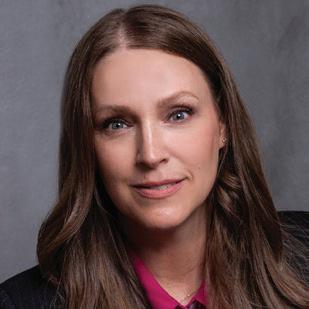
I would like to see the streaming wars come to a stalemate and plateau to a new normal, because the industry can’t tolerate more dramatic inflation of production budgets and more cuts to acquisition prices. And with the passage of C-11, we can start to see Telefilm and the Canada Media Fund move towards a superagency model.
- Shant Joshi, president, Fae Pictures

It’s more of a wish: Collectively we are creating EDI initiatives upon systems that are inequitable at their root. I want the system itself to change –starting at the top with the Prime Minister’s Office establishing 10% Black targets across the board, like with gender equity, to seed meaningful change.
- Joan Jenkinson, co-founder, executive director, Black Screen Office


One of the biggest changes in Canadian media is that Telefilm is more open to other languages in their program, and now with the current events in Iran focusing on women’s rights and freedom, I predict more focus on Iranian-Canadian stories – both features and series. It is well overdue, because there is a very big Iranian population in Canada and not very much representation of us whatsoever in the media.
- Panta Mosleh, director, producer and CEO, PK Studio Productions

In 2023, our industry will see more diversity, more change, and more content. I think we’ll see the consumption of Canadian content soar to new heights, and I challenge everyone reading this to keep rallying, clicking, buying, watching and supporting our homegrown content and creators.

We predict that once Bill C-11 passes there will be new opportunities for Canadian producers and talent to produce Canadian content for the global market.
- Teza Lawrence and Michael Souther, co-founders, Amaze
We see significant opportunity in 2023 for independent producers, particularly ones like Boat Rocker, to combine premium content experience with a range of budget levels. The demand for content is still high, it’s the mix that is changing. Adapting to this new reality is the opportunity for the next 24 months.
- John Young, CEO, Boat Rocker Media
Entertainment options for consumers will continue to grow in 2023. As a result, finding a way for content to remain ‘top of mind’ among its audience will be more important than ever.
- Jeff Hersh, COO, New Metric Media

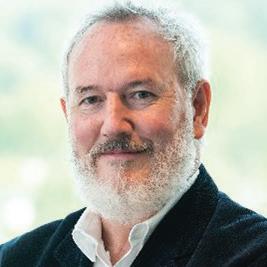


- maxine bailey, executive director, Canadian Film Centre
‘The only constant in life is change’ should be the tagline for the film and television industry. In these turbulent times, I try to remind myself and other creatives that the need for content remains. Your dream project may not sell right now, but the industry is always shifting and responding to the marketplace, so I focus on developing projects that excite me knowing (and hoping) the market eventually will respond.
- Lauren Grant, founder, Clique Pictures

The demise of the movie cinema industry is a myth. Watch in 2023 as cinemas continue their comeback, with a vengeance, stronger than ever. Movie fans remain, and only in the cinema theatre can one experience the excitement, the ambiance, the sound, the smell of popcorn, and the pure joy that a shared moment of cinema can bring. No streaming service will ever replace that. Our love for watching films in theatres will continue.
- Vincenzo Guzzo, president, CEO, Cinémas Guzzo
 Photo: George Pimentel
Photo: George Pimentel
What could inclusivity look like in the year ahead?
But don’t forget the elephant in the room…
Lasso love
Bumble has put the fictitious Bantr dating app from Apple TV+ soccercoach dramedy Ted Lasso onto its own platform as a weekly live experience in Canada, the U.K. and Australia. Bantr Live users connect only with words, no photos. As Ted himself says: “If the internet has taught us anything, it’s that sometimes it’s easier to speak our minds anonymously.”



Ava DuVernay’s distributor ARRAY Releasing has partnered with U.S. airline JetBlue for an in-flight pop-up channel featuring 12 indie films from artists of colour and women directors. And there’s Cancon in the mix: The Body Remembers When the World Broke Open, written and directed by Elle-Máijá Tailfeathers and Kathleen Hepburn.

8
to our partners on a groundbreaking year of original storytelling and your dedication to re ecting more people and perspectives in Canada.
CBC detective series
Murdoch Mysteries has cracked the case of eventizing. After brand extensions including an escape room and augmented reality game, producer Shaftesbury is embarking on Murdoch Mysteries: The Experience. The revenue from such brand extensions “benefit the production slightly,” but the focus is on audience engagement, says Shaftesbury.

The Mouse House is going around the world with the Disney Animation Immersive Experience. Canadian Oscar-winning producer J. Miles Dale is the executive creative director of the show, designed by Lighthouse Immersive Studios. The project made its world premiere in Toronto in December and will next head out to the U.S. and globally.
 BY VICTORIA AHEARN
BY VICTORIA AHEARN
MGM has launched the AI-infused MGM Clip
Locator for marketers and production companies to quickly source specific lines of film dialogue as well as objects or actions depicted in a scene from its library of content. MGM says it’s the first Hollywood studio to offer this type of platform, from which brands and filmmakers can license movie quotes and scenes.

AS HE PREPARES TO RETIRE from hosting CBC’s The Nature of Things after 43 years, Canadian environmentalist and science broadcaster David Suzuki says the documentary series is more crucial than ever and he hopes the pubcaster can find innovative ways to maintain its popularity.

Suzuki announced last October that he plans to retire in spring 2023, after his final episode on the show’s 62nd season. He started hosting the docuseries on Oct. 24, 1979.
“The challenge is that the world of television has changed completely since I started hosting The Nature of Things in 1979. There were basically two or three Canadian networks, and of course, we had U.S. networks like ABC, NBC, and CBS,” Suzuki says.
“We also plan to do more short-form digital content to reach younger people looking for science content on different platforms,” she says.“The series will continue to do what it does best – to inspire wonder and awe about our living world, through stories rich with characters and adventure.”
BY ANGELICA BABIERAThe Nature of Things has consistently ranked as one of CBC’s top 10 most-watched factual series alongside titles including The Great Canadian Baking Show, Still Standing, Family Feud Canada and Dragons’ Den, reaching an average of nearly six million viewers over the past five seasons from 2017/18 to 2021/22, according to audience data provided by CBC (Numeris for TV; Adobe Analytics for CBC Gem/Streaming).
The pubcaster tells Playback that “while the show’s linear audiences have declined slightly over the past few years in line with overall TV audiences declining year over year across all English-language networks in Canada, streaming views of the series on CBC Gem have increased by 8% year over year since CBC Gem was launched in 2018.”
CBC announced the show’s new hosts in late November: Anthony Morgan and Suzuki’s daughter,
Suzuki feels the series offers unique and vital information for this era. “The important thing is to continue it, because so many new things are coming up: genetic engineering and geoengineering and artificial intelligence, plus all of the environmental problems with climate change and toxic pollution and ocean degradation,” he says. “The show has never been more important for Canadians.”
Suzuki says he stopped flying for The Nature of Things two years ago to promote sustainable production in the industry. According to the 2021 report from the Sustainable Production Alliance, air travel is the biggest contributing factor to emissions for unscripted TV at 61%.
“The big thing that COVID has shown us is that we don’t have to travel to other places to do shows. With Zoom, we can interview people anywhere on the planet,” he says.
“We know we can’t be flying around the way we’ve done in the past and that gives us new opportunities. We’ll save money by hiring local crews, and I believe that programs will benefit from the diversity in the production of those shows.”
David Suzuki discusses his hopes for The Nature of Things, the future of nature programming and CBC.Sarika Cullis-Suzuki. Jennifer Dettman, executive director of unscripted content at CBC, says the goal is “to bring this long-standing series to new audiences” on CBC TV and Gem. David Suzuki, host of CBC’s The Nature of Things for the past 43 years, will sign off for good this spring. Photo: Ben Nelms
Photo: Red Works Photography
Kerry Swanson was recently appointed CEO of the Indigenous Screen Office (ISO) after multiple roles at the organization since 2019, most recently co-executive director alongside Jesse Wente, who departed at the end of 2022. She’s also held leadership roles at imagineNATIVE, the Ontario Arts Council and Toronto Arts Council, among others. We asked Swanson about her goals for the ISO, which was allocated $40.1 million in financing over three years in the 2021 federal budget and announced a three-year strategic plan in August that includes a new protocol tool kit for its On-Screen Pathways and Protocols industry guideline.

Push for systemic change
Increase investments and funding opportunities

AQUILINI DEVELOPMENT FIRST NATIONS ADVISOR JOHNNA SPARROW-CRAWFORD HAS BEEN SURROUNDED BY THE FILM WORLD FOR MANY YEARS, with a husband who’s a stunt performer and coordinator, and four children involved in the industry in various roles.
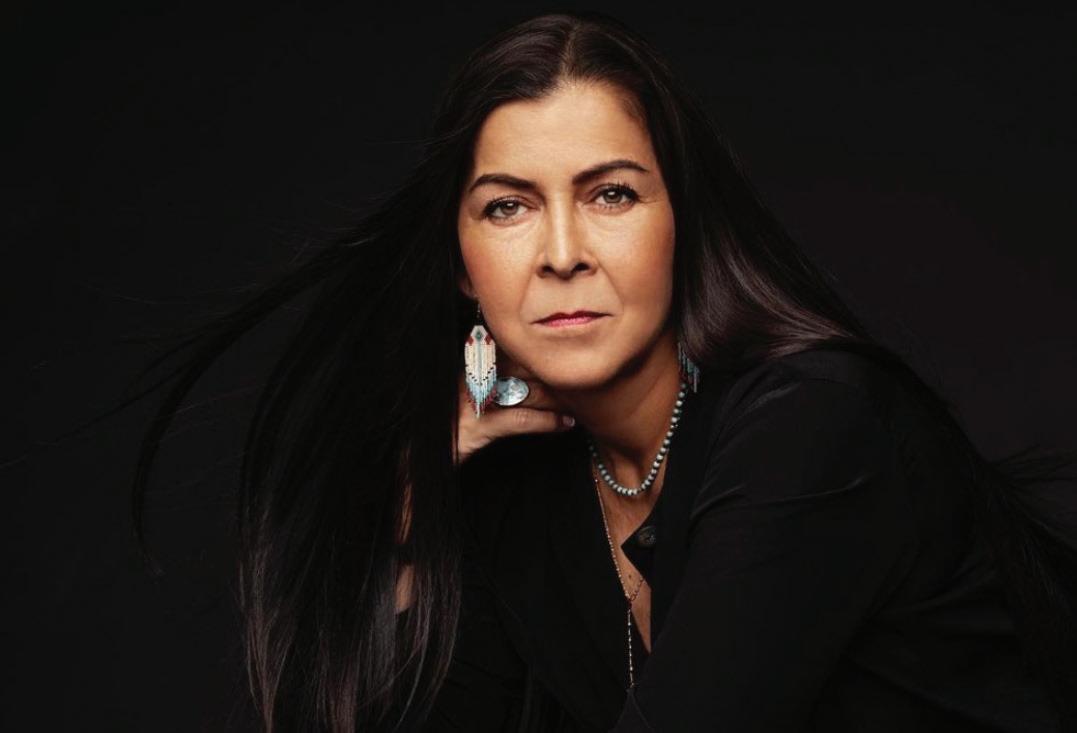
But about eight years ago she realized: “We don’t really have anything that is tailor-made or offered to our own people, that is going to expose them to this amazing creative world of storytelling that’s very traditional to us,” she tells Playback
That narrative is now changing, thanks to an Indigenous-owned project to build a studio space and film academy as part of the Willingdon Lands site in Burnaby, B.C. The first-of-its-kind, 40-acre parcel is jointly owned by Musqueam Indian Band, Tsleil-Waututh Nation and Aquilini Development and will be a mixed-use community also including housing and a cultural node.
Sparrow-Crawford, who is from Musqueam, and other leaders of the project announced details at the Sustainable Production Forum in October and now have the proposal at the public hearing stage after the city approved a rezoning application. The film and television production studio will span 21 acres with approximately 450,000 square feet and 15 stages, while the Indigenousfocused film academy building will be three storeys and approximately 5,000 square feet, says Sparrow-Crawford.
Sparrow-Crawford says she’s had meetings with various film industry stakeholders and potential partners who want to help build the academy,
which she hopes will provide a sense of empowerment and “enhance the skills of our own people as traditional storytellers to find a place for them.”
She isn’t able to offer an accurate anticipated cost for the studio and academy yet but hopes provincial and federal funding will assist, she says, noting the build out for the project will take a few years.
“It’s about building confidence and being proud of who you are and where you come from so that you want to share the stories that have been traditionally handed down for us for thousands of years through film.”
Sparrow-Crawford is still figuring out what types of programs and amenities the academy will offer, but she says it will be open to First Nations people across the country and North America. With the British Columbia Institute of Technology and the studio in the same vicinity, academy students will hopefully be able to access those facilities and be “set-ready.”
The facility will help honour the memory of late, great elder Chief Dan George of the Tsleil-Waututh Nation, an esteemed actor who got an Academy Award nomination for Little Big Man in 1971, and tell the story of Indigenous peoples, Sparrow-Crawford says.
“There’s only so much politics and listening to the news can do. It’s when you get into the film industry –and you have a series of opportunities to expose people to the depth and meaning and experience that we’ve gone through – then you create change, because people will relate to it and understand us better and be excited for our successes.”
A look at the creation of an Indigenous-owned studio and First Nations-focused film academy in B.C.Photo: Dennis Gocer
Hallmark Channel is moving into the next phase of its original series strategy, opening up opportunities for Canadian creators and producers.
BY KELLY TOWNSENDCanada has always had close ties to Hallmark Channel as a crucial production spot, but the network’s two upcoming original programs bring that one step further. The Way Home, produced by Toronto’s Neshama Entertainment and L.A.-based MarVista Entertainment, is a timeline-jumping, multi-generational family drama set in smalltown Ontario and stars Andie MacDowell, Chyler Leigh and Ottawa’s Sadie Laflamme-Snow as an estranged family reuniting.

Ride, produced by Toronto’s Blink49 Studios and Calgary’s SEVEN24 Films, marks Hallmark’s first Alberta-shot series. The title is created by Rebecca Boss and Chris Masi, who coshowrun with Sherri Cooper-Landsman.
The projects represent the channel’s plan to “elevate” their original series, Laurie Ferneau, SVP, original programming at Hallmark Media, tells Playback, adding that the channel and its streaming platform Hallmark Movies Now (HMN) are open to “all kinds of producing partners and deal structures.” As an example, The Way Home is owned by Hallmark, while Ride is a licensed, Canadian-owned series.
Playback: How has Hallmark Channel’s original series strategy shifted over the last few years?
Laurie Ferneau: When I joined Hallmark in 2014 we had Cedar Cove and When Calls the Heart, and we were just launching Chesapeake Shores and Good Witch. In 2019 we took more of a concerted effort to see what the next step was in the evolution of [original] series for Hallmark. We just wrapped up Chesapeake Shores this year, and Good Witch wrapped up last year. We’re really excited to see the Hallmark 2.0 of it all for our series.


We put The Way Home and Ride into development last year, around late summer or early fall. We had creatives already attached to them, and then we brought in a showrunner [Cooper-Landsman] on Ride. We had the rooms up and running by early 2022 and were in production on both shows by August, so it was fast and furious.
The Way Home creator Marly Reed and motherdaughter showrunning team Alexandra Clarke and Heather Conkie – who came from Heartland – had such a beautifully fleshed-out world, story and season. There are some twists and turns in this one and we had a lot of questions in terms of how things play out, and they had an answer for everything. They had such a grasp of what the show was going to be, and we’ve really stayed true to their vision.
Ride is a bit more rough and tumble. It’s cowboys, ranch life, bullfighting and trick riding. These are totally different-looking shows and different vibes, but equally impressive in terms of the storytelling.
We’re always looking for things that feel true to the brand, that’s rooted in positivity, warmth and comfort – that’s hopeful, feel-good. Things that are kind of fresh yet familiar to the audience. We’re expanding in that family drama space and looking for shows about female friendship or ensemble dramas.

We’re probably never going to do a medical, legal or cop show, but we could visit those worlds. In terms of a character-based medical show, what would that look like for Hallmark? How can we make our Grey’s Anatomy?
I hope so. We’re really looking to expand into our streaming space, our SVOD service, HMN. I think next year will be a good indicator of this new content if the audience really responds to it, and that will only lead to more series.
Shows like [Netflix’s] Atypical are something that really resonates with us, and the Ted Lassos of the world. It’s uplifting, it’s positive, yet there’s more depth to it and a story to tell. Gilmore Girls is always a great benchmark for us as the kind of mother-daughter fun dynamic we’re looking to explore more of.
There’s so much content out there, it’s hard to really find your niche, and I think Hallmark has such a great way of doing that. People know what they’re going to get when they come to us. We just want to reinforce that and give them great new stories, new characters, and new things to fall in love with.
This interview has been edited and condensed.
What are some examples of series on different networks and streaming platforms that represent the concept of elevated programming to you?

Movers, shakers and a whole lot of changemakers: 2022 buzzed with groundbreaking series, producers, directors and showrunners creating international headlines, alongside significant efforts to move the needle on equity, diversity, inclusion and authentic storytelling. Read our annual list to see who lit up our screens and opened our minds in the past year.



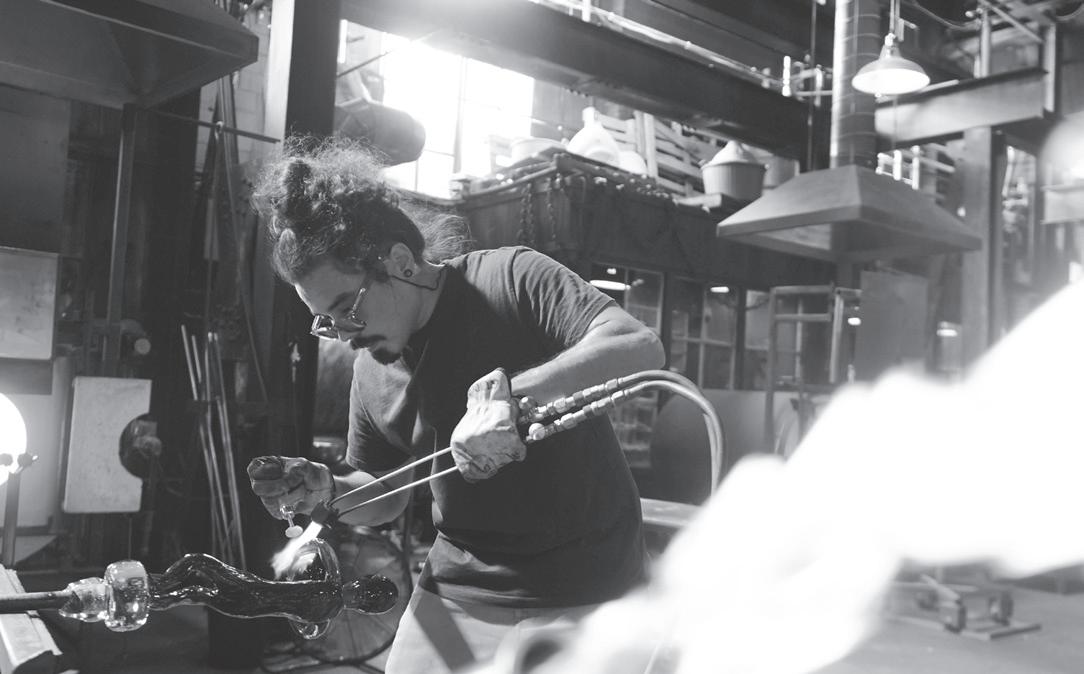


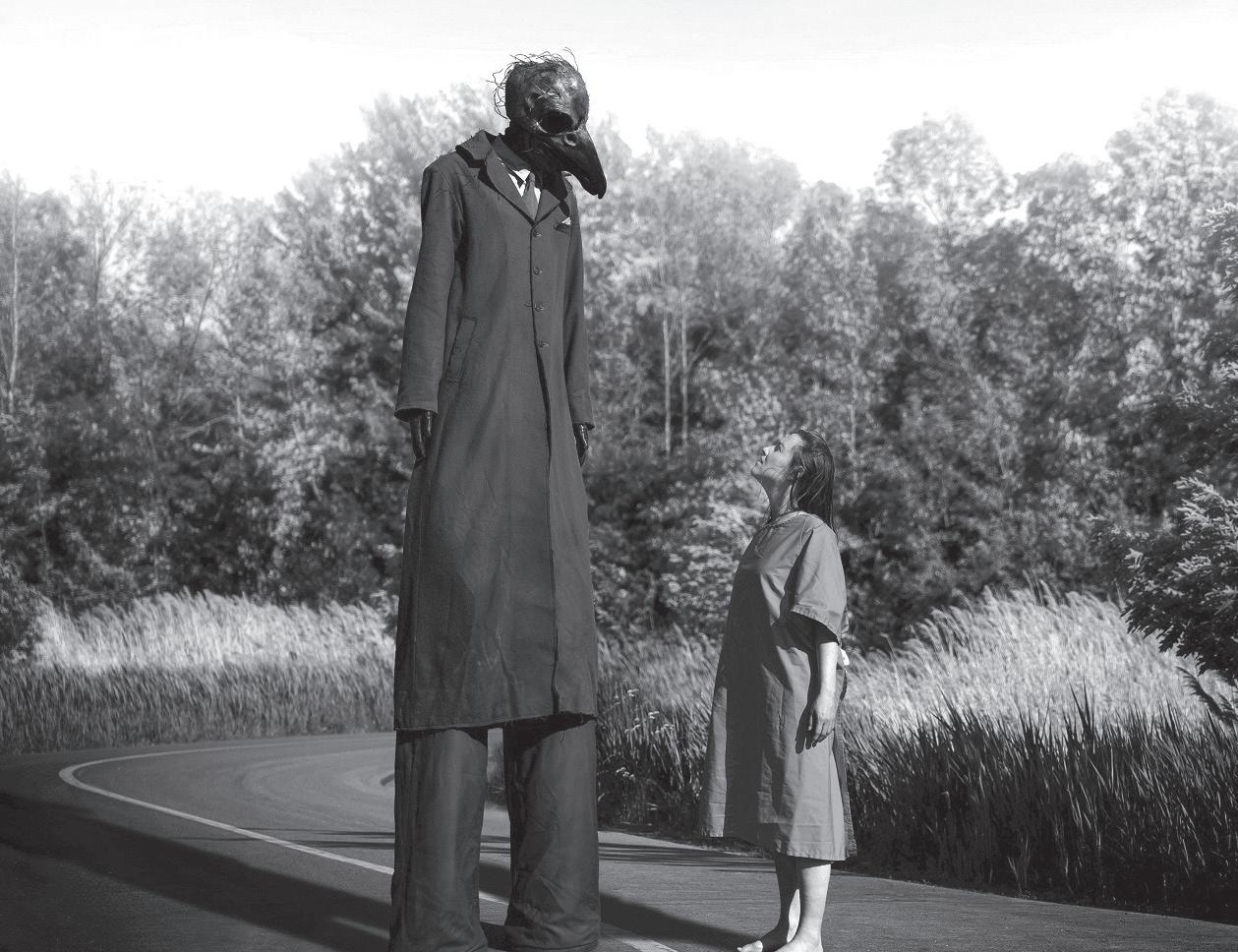

“CHANGEMAKER” IS A MONIKER OFTEN ACHIEVED AFTER DECADES OF WORK. But just two years into the creation of The Black Academy, and six years after launching not-for-profit B.L.A.C.K., cofounders Shamier Anderson and Stephan James have more than earned the title.

Last September the Toronto-raised actor-producer brothers launched the televised Legacy Awards on CBC – billed as the first major Canadian awards show to celebrate and showcase Black talent – paying it forward behind-the-scenes with a skills development program for Black creatives. The Legacy Awards were produced by Boat Rocker’s Insight Productions as well as the brothers’ Bay Mills Studios banner, under which the duo have “a robust slate of projects” aimed for Hollywood.
Playback: What are your thoughts on the significance of the Legacy Awards?
Stephan James: It’s even exceeded our expectations as far as the impact that we wanted to have in our community. That gives us validation, when you have different individuals reaching out to us – whether they were a part of the show, went to the show, or saw it on television – saying that it impacted them… that they had been in the industry for 20, 25 years and have never experienced a night like this and have never felt seen in this way.
What are your goals for The Black Academy Skills Development Program, which launched in September to help Black Canadians enter the screen-based industry?
Shamier Anderson: The expansion is about trying to go coast to coast, opening up those verticals, hiring more people. It’s the follow-through. It’s like you do a jump shot and you get the ball in the net; the ball in the net is the Legacy Awards and the follow-through is the skills development program.
What are your overall goals for The Black Academy?
SA: I would love in the lead-up to the award show that we’re doing activations in Vancouver, Calgary, P.E.I. I think it’s important, especially in some of the rural parts
vitamin. We have different verticals, TV – scripted, unscripted – and movies. We’ve got a robust slate of projects that have not been announced yet. We really want to take incredible Canadian filmmakers and artists and use our platform to catapult them into the big business of Hollywood.
When it comes down to submissions, we have first-look TV deals, so we develop from the seed stage of a project – whether it’s an idea, whether it’s a deck, whether there’s a writer attached, a producer attached, a director attached. We’ll come in at any stage on the TV front.
If we really engage and respond to the project, we’ll bring it into [development] through our deal. What that will look like is we’ll finance development at 100%. The copro aspect is something that we’re always open to.
On the film side, we’re wide and open. We’re looking for projects at any stage as well, but with an eye towards a really strong package. What that means is a strong filmmaker at the helm, a really notable writer, someone who’s getting a lot of buzz. We’ve got a team –VP of development, Holly Hubsher and Tse Daniel, our director of development – and they work closely with us in picking projects

What does being a changemaker mean to you?
SJ: It’s giving people jobs, a literal source of income, livelihood; giving people skills that no one could ever
of Canada where people who look like us may not feel like they even have a voice.
SJ: If there’s a way to continuously use all the opportunities we have as producers to help get people jobs that they wouldn’t have otherwise, it’s going to be really important. But also, having conversations with the unions, whether it be ACTRA, or conversations with other productions that we’re not attached to and seeing if we can find a way to blend the skills development program within [other avenues].
Speaking to the Academy as a whole – more programming, other ways to continue to reach out to the community. We started the Monologue Slam a few years back, and that got hit with the hurdle that was COVID in 2020. But that’s something Shamier and I are actively looking to bring back. The youth are important to us in our mandate.
Something that we were planning this year was the Black Summit, in which we would have different programs take place over a period of maybe a couple of days.
You’ve been coproducing a limited series on late artist Jean-Michel Basquiat, which has been in development at Boat Rocker, where you signed a first-look deal in August. Tell us your strategy at Bay Mills Studios.
SA: Our strategy is commercially viable content. It needs to be entertaining, however we’re looking for something to say. So it needs to feel like a chocolate-covered
take away from them; putting them on stage, giving them awards so they could share their testimony with Canada and with the world. That’s the stuff that excites us even more so than our day jobs.
SA: Be the change you want to see, that’s a changemaker to me. Growing up in Scarborough – Bay Mills, Birchmount and Sheppard – living in Toronto Community Housing with our immigrant mother from Jamaica, I didn’t see the things that I see now. I didn’t grow up on Black awards shows in Canada. I didn’t see the Black academies – and even if they were there, [there were] barriers to entry. That’s the change – it’s making it tangible.
This interview has been edited and condensed.
The founders of The Black Academy and Bay Mills Studios want to level up the Legacy Awards and create meaningful opportunities for creators.BY KELLY TOWNSEND
WHEN CANADA’S SCREEN INDUSTRY FACED A CULTURAL RECKONING IN 2020 TO ADDRESS SYSTEMIC RACISM, ONE OF THE LOUDEST CALLS WAS FOR THE COLLECTION OF RACEBASED DATA. It was a call that the Black Screen Office (BSO), founded that same year, answered loud and clear in 2022, publishing a series of reports –titled Being Seen, Being Counted, and Being Heard – with insight on Black audiences, as well as Black producers, artists and crews working in the industry.
“The research itself is groundbreaking, so the revelations have been eye-opening for many – and not just here in Canada,” BSO co-founder and executive director Joan Jenkinson tells Playback. “I’ve spoken to industry professionals and funders from around the globe and they are fascinated by BSO’s research and its potential local applicability and replicability.”
formed the career accelerator program, which has attracted partner organizations such as the Directors Guild of Canada and CPAC, with plans to recruit partners “from the highest levels of government,” according to Jenkinson.

The BSO has introduced several initiatives outside of its research work, including the Rogers-BSO Development Fund, and the Black Creators Film Festival initiative. The latter has led to critical industry connections at the Cannes Film Festival and, most recently, Content London, with a delegation expected to attend the European Film Market in Berlin in February.

of participants said they want to see broader, authentic representation of different racial and cultural backgrounds in entertainment content, with 45% of Black audiences saying it’s something they strongly agree with.

Completing these studies was a massive group effort, including the current and past BSO board of directors, Being Seen research team lead Kelly Lynne Ashton, and Being Counted and Being Heard research support Lindsay Valve, lead consultant at agency Quilin.
- Source: Being Counted
The organization has already taken direct action from the research outcomes, including the establishment of the Being Seen collaborative network with industry decision-makers to work toward unifying their approach to equity, diversity and inclusion. The BSO has also
“[The positive international response] was a clear reminder that the oft-used line that there ‘isn’t a market’ for Black stories is obviously baseless and a convenient way to stay stuck in the past,” says Jenkinson.
Building on their work will involve “bold steps to do things differently,” says Jenkinson, pointing to Festivale, their pre-development initiative with Crave to create the first bilingual anthology series by and about Black Canadians, as an example.
“We are thinking about a studio collective that unites all of our talent development initiatives under one umbrella,” she says. “As Black creators and industry professionals who have been excluded for too long, it’s not enough to simply take a place at the back of the line and wait our turn. Acceleration for us means moving to the front of the line and making the content that we know wants to be seen. A BSO studio collective would help achieve that.”
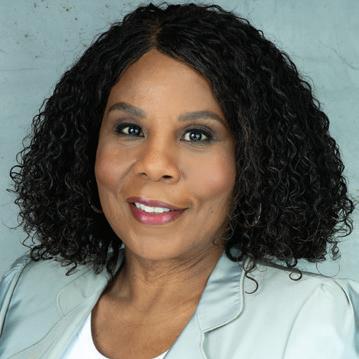
The BSO’s trailblazing research initiatives have laid the groundwork for their “bold” strategy to create real change in Canada’s screen sector.
“The Being Seen directives are central to achieving real transformation across the industry... Our intention is to keep sharing them and, critically, gathering feedback on how real-world implementation of the directives is going.”
- Joan Jenkinson, BSO co-founder and executive director
Being Seen is a consultation with audiences and screen industry members from underrepresented communities about onscreen representation. It includes a series of directives for creatives, producers and decision-makers on Black communities, other racialized communities, the 2SLGBTQIA+ community, persons with disabilities, as well as a specific focus on children’s media within those communities.
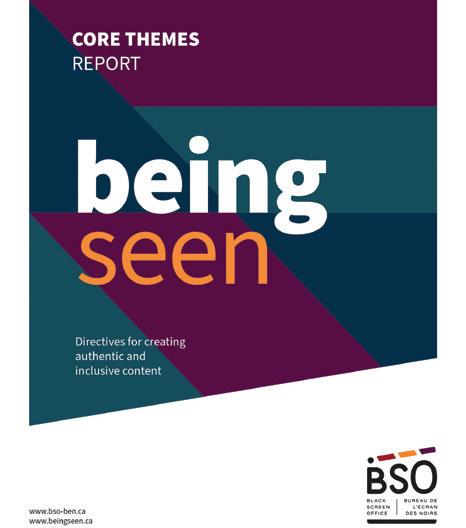

Being Counted is a race-based audience survey that explores the viewing habits and interests of Black, Indigenous and people of colour consumers.
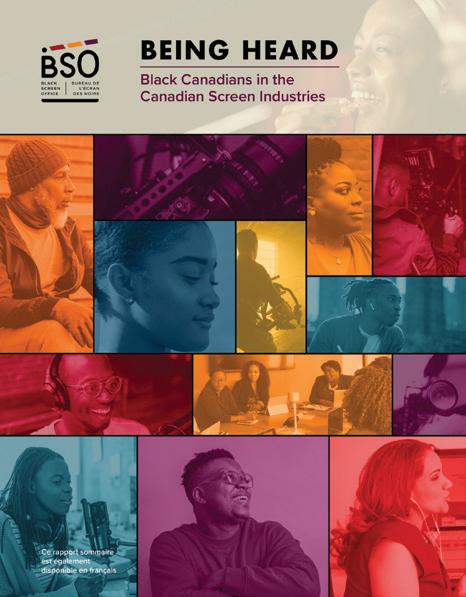

Being Heard uses qualitative data from the screen industry’s Black workforce to address biases and systemic inequities within the domestic film and TV sector.

of Black audiences felt strongly that the way entertainment content portrays their own racial and cultural background is important.

- Source: Being Counted
of participants said they do not report to someone who is Black, Indigenous or a person of colour.
- Source: Being Heard
“In order to be valued, groups need to be counted, heard, and seen. Without analytical data about the viewing patterns, habits, and desires of Black people, we’re not able to identify the systemic barriers to inclusivity at work in our industry.”
- Floyd Kane, BSO co-founder, board member, and research committee chair
LETTERKENNY. Now that the company has – as the hoser characters would say – “figgered out” a winning strategy, it’s leaning into its strengths.
The Toronto and L.A.-based prodco, led by president Mark Montefiore, laid the groundwork for a banner year in late 2021 after its CTV sitcom Children Ruin Everything – created by Kurt Smeaton – was acquired in the U.S. as an original for The Roku Channel. A few months later the series was renewed for a second season with a 16-episode order, doubled from the original eight-episode first season.
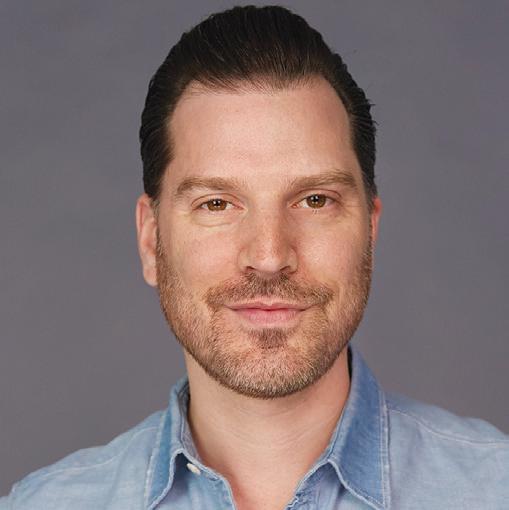

“The momentum was just snowballing and excitement was high,” Montefiore tells Playback on the renewal decision. “Everybody felt like they were sitting on something fantastic.”
He says Bell Media and Roku agreed to double the episode order between seasons based on two critical factors. The series was exceeding expectations in terms of the quality of its production value, and the fact that it was a studio show meant that filming more episodes would amortize the cost of the set builds. “It was a no-brainer in many ways,” says Montefiore.
A month later, Montefiore unveiled the company’s pivot away from drama production to become a comedy-focused entertainment studio, building on their past success creating new revenue streams with Letterkenny through merchandise and live events. The announcement came a few months before the May 2022
debut of Letterkenny spinoff, Shoresey, on Crave, created by Letterkenny mastermind Jared Keeso and directed by Jacob Tierney.
Montefiore says the impetus to move the company solely within the comedy world, despite past success with Citytv and Netflix series Bad Blood, was to address what he saw as a gap in Canada’s English-language market, where no production company was “embracing comedy” from a “360-degree standpoint.”
The decision was based on multiple considerations: the success of long-running series Letterkenny, which has brought in several streams of ancillary revenue through live events, merchandise, and now a spinoff series; their reputation in the comedy space; and data on what’s working in the market.
“The currency for streamers is both subscriber acquisition and subscriber retention. That’s what’s important, whether you’re Crave, Disney+ or Netflix,” says New Metric Media COO Jeff Hersh. “When you actually look at the data and the sheer amount of viewing... it’s all lean-back, less than 30-minute shows, which really fall into two categories: comedies and unscripted.”

Hersh, who formerly led Bell Media’s direct-to-consumer strategy, joined New Metric in early 2022 as part of a corporate expansion. He was joined by Bill Lundy, a former comedy production executive at Bell Media, who was named SVP, comedy.
Hersh says series such as Letterkenny and Shoresy are examples of programs that not only drive subscribers, but are a tool for audience retention. “When you look at all that’s been going around about Netflix and other streamers and their cuts, what they’re cutting are those big dramas because they’re so expensive,” he says.
The powerhouse producers behind Letterkenny have their sights set on a comedy brand empire, fuelled by quality content and market savvy.Left: Mark Montefiore, president, New Metric Media Below: Jeff Hersh, COO, New Metric Media
So far, the data backs them up. Shoresy became the most-watched Canadian series debut on Crave when it launched on May 13, 2022, according to Bell Media, ousting previous champion Canada’s Drag Race.
The Children Ruin Everything series premiere on Jan. 12, 2022, was the “biggest debut for a Canadian comedy among the 25 to 54 demo” since CTV’s Jann, said a spokesperson for CTV. It attracted an average 764,000 viewers, according to data from Numeris, and was the No. 1 new comedy for CTV’s 2021-22 broadcast season.
Season two premiered on Sept. 19, which CTV says was the top Canadian comedy in fall 2022 “among total viewers and all key demos.”
Montefiore says New Metric is looking at all possible data sources to help inform business decisions, including social media and e-commerce. They also look at Parrot Analytics, which measures audience demand for series, films and talent through a range of sources, including social media, blogs and streaming. For example, Children Ruin Everything was in higher demand than 88% of other family titles globally as of December 2022, with global market demand peaking at 3.64 times higher than the average series.
Content is still king when it comes to their development slate, however. Montefiore says the company won’t shy away from a strong concept just because there aren’t clear opportunities for merchandising. Rather, the company views ancillary revenue as a
long-term benefit of investment in talent development, led by Lundy.
That talent includes Sasha Leigh Henry, the showrunner of New Metric Media’s upcoming Crave original comedy Bria Mack Gets a Life. Montefiore discovered Henry through her short film Bitches Love Brunch, and the company spent several years developing the series before getting the greenlight through Crave. The comedy went into production in fall 2022.
“A lot of buyers are looking for a finished product that’s ready to shoot, but we don’t look for that,” says Montefiore. “We buy into the potential of something.”
Hersh says the current blueprint is to build out organic growth, which is focused on development, production and marketing opportunities, and inorganic growth in the form of mergers and acquisitions.
In the case of Letterkenny, which had its season 11 premiere on Dec. 25, Montefiore says “in many ways we’re just getting going.” The prodco has aspirations for even more spinoffs to “grow the Letterkenny universe” in addition to new seasons for the two existing series in the franchise, as well as more live events.
“Everything we’re doing is about building and engaging our fan base, irrespective of the extra dollars,” says Hersh. “Hopefully that at least comes out in larger audiences. We’re always exploring these pieces because at least it could develop that audience, with the potential for significantly more.”

FIRST GENERATION FILMS FOUNDER CHRISTINA PIOVESAN IS AT A CROSSROADS, deciding what the next iteration of her company looks like amid the success of its first TV projects.
Piovesan started developing TV shows five years ago while continuing to produce star-studded indie films under her own banner, which over the years have included The Whistleblower, Regression, Mouthpiece, Amreeka, Paper Year and American Woman Since 2016 she’s also had a partnership at Elevation Pictures as head of production, working on features such as 2020’s French Exit, 2022 Toronto International Film Festival world premiere Alice, Darling and the upcoming A Good Person and Sundance-bound Infinity Pool
Those TV projects have started coming to fruition: In April 2022, Apple TV+ premiered the first eight episodes of kids and family animated TV series Pinecone & Pony, also produced by DreamWorks Animation (the next eight will premiere in early 2023); CBC and First Generation wrapped filming on and are preparing to premiere the rural Ontario-set limited family drama series Essex County, based on the graphic novel by Canadian comic book writer Jeff Lemire, with ITV Studios and Media Musketeers as international distributors; and HBO Max picked up live-action, music-filled tween series Home Sweet Rome, created by Michael Poryes (Hannah Montana) and coproduced by First Generation along with Italy’s Red Monk Studio and France’s Superprod. The latter series is now looking for a new home, after HBO Max announced it was shifting away from kids content, but Piovesan says it’s fully financed and the broadcast shift won’t affect production.

“I think developing great material is the same across TV and movies, even financing it is similar,” says
Piovesan. “But there’s a stamina you have to have across multiple hours of TV that you don’t have to have in film. You can just go out and make a movie and worry about everything else later, but you can’t do that with TV.”
Piovesan has that stamina and is not slowing down her TV efforts anytime soon, with First Generation now adapting Canadian writer Scaachi Koul’s memoir One Day We’ll All Be Dead and None of This Will Matter and the CBC podcast Someone Knows Something After spending years developing successful indie films, Piovesan wasn’t actively looking to get into TV, but a series of industry connections took her on a new course. Piovesan says former First Generation Films VP of scripted programming Julie Di Cresce introduced her to Lemire and Kate Beaton, who wrote children’s book The Princess and the Pony (which was turned into Pinecone & Pony). While working with DreamWorks on that, Piovesan met Doug Schwalbe (now president of Superprod US), who introduced her to Home Sweet Rome. After Di Cresce left the company in 2016, Mackenzie Lush joined as VP of development and production for scripted TV from 2017 to 2020 and introduced Piovesan to Koul’s book and the CBC podcast.
Now, Piovesan finds herself continually drawn into TV’s collaborative nature and the ability to work with different people.
“Unlike feature films, in TV, you can work with a broadcaster or another stakeholder and they are engaged in the process,” says Piovesan. “Whereas in independent feature filmmaking you’re often developing in a vacuum.”
Piovesan is enjoying a diverse slate, but such a prolific output has her mulling over the future for her company. She’s now deciding whether she wants to raise capital and grow her company’s team and slate, or find another company to partner with and turn First Generation Films into a co-venture.
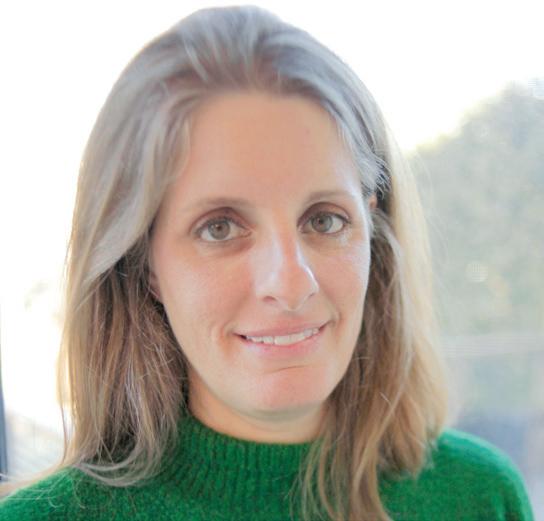
Ultimately, the company can’t continue as it has been, says Piovesan, noting she loves making TV and doesn’t plan to stop at any point. She wants to keep developing a diverse slate, but won’t be able to keep doing so without some changes and more financial help.
“I’ve been very fortunate to develop a slate that has engaged the marketplace, but I’m trying to figure out what’s next – and what’s First Gen 2.0,” she says. “I’m at a transition point and I probably won’t be operating this same way for much longer.”
STREAMING PLATFORMS ARE NOTORIOUSLY RETICENT WITH RATINGS DATA, but by every other tangible measure Club Illico’s Audrey est revenue (Audrey’s Back) made a splash in 2022.
A 10 x 30-minute dramedy from Quebec-based producer Pixcom, the critically acclaimed French-language show has stacked up numerous awards, including a Rockie from the Banff World Media Festival, the Grand Prix at international TV festival Canneseries and five Prix Gémeaux. It has already been sold to Canal+ in France and RAI in Italy.
Pixcom co-founder and executive producer Nicola Merola says he sensed the series –about a young woman who rebuilds her life after waking up from a 16-year coma – would be special the moment co-creators Guillaume Lambert and Florence Longpré pitched the idea. “They both have the gift of being able to talk about the little things in life in unexpected ways. When they brought us Audrey, it was such a fresh take on this subject.”

Quebecor-owned streamer Club Illico and international distributor Beta Film felt the same: “Club Illico liked the idea immediately and we went straight into development,” says Merola. “There was still a financing gap, but Beta Film – who we have worked with previously – also felt passionate about the project and came on board quickly.”
Beta Film chief distribution officer Oliver Bachert says the series skillfully blends local sensibilities with universal themes. “There are not many slots for this kind of dramedy – so that makes it more challenging to place than a crime series. But it is so distinctive it stands by itself. Canal+ and RAI acquired Audrey because it has such an authentic voice.”
Audrey est revenue is a limited series and won’t have a second season, so distribution takes on an added commercial importance. Bachert says “we have secured some additional European sales [to be announced], but our primary focus now is to sell to Germany and the U.S. Because the show is French-language, streaming platforms will be our primary targets in the U.S.”
One possible option, after tape sales, is to pursue format deals. Bachert and Merola are open to this – but fiercely protective of the show’s creative provenance. “We have done
format deals before,” says Merola, “but my view is there is only any point if the remake is at least as good as the original. And it would be hard to adapt Audrey with the same finesse.”
Co-writer Longpré plays the central character in the series, directed by Guillaume Lonergan and produced by Marie-Ève Pelletier.

Having made its mark with French-language series, Pixcom is now producing in English. Crime series Wong & Winchester is poised to air on Citytv, and half of the company’s development slate is English, with a CBCbacked project coming soon. Merola says: “We have a passion to tell stories, and some work better in English. English also connects us with new talent – so we want to keep developing in this direction with Canadian networks and international partners.”

The Pixcomproduced Club Illico dramedy has enjoyed awards, critical kudos and international sales success in 2022.Above: Nicola Merola; Right: Charles Lafortune
In the span of a year, the Sphere Media-produced series has been lauded at home and abroad by critics and audiences alike.
THE PAST YEAR HAS BEEN MORE THAN “SORT OF” GROUNDBREAKING for Bilal Baig and director Fab Filippo – it’s been a resounding smash.
The creators of the CBC and HBO Max original series Sort Of have earned several accolades for the series’ first season – including a prestigious Peabody, a Banff Rockie Award for Program of the Year, and Best Comedy at the Canadian Screen Awards – since its premiere in fall 2021.
“It’s a very cross-sectional show, and not only that, but there’s a gentleness to the voice that I think people are hungry for right now,” says Filippo, who serves as co-showrunner and executive producer of the series alongside Baig.
It’s also incredibly diverse, adds Baig: “I could look around sometimes and be like, ‘Wow, this really looks like the Toronto I know and some of the spaces I move through,’ with this combination of trans folks, and people of colour, and cis people, and white folks [who] are all tied in together.”
The 8 x 30-minute dramedy, produced by Sphere Media (formerly Sienna Films), stars Baig as a genderfluid nanny helping a family in crisis while grappling with challenges in their own family.
Critics have praised its approach to queerness, with Baig billed by CBC as the first non-binary lead character on Canadian television and the first South Asian, queer Muslim actor to star in a Canadian primetime TV

series. They’ve also been nominated for a Gotham Award for Outstanding Performance in a New Series.
The team paid it forward in season two, which debuted last November, by providing six trans and/or non-binary industry talent with paid training and work placement on set as part of a mentorship program.
Sort Of has also been one of the most-watched comedies on CBC Gem since its debut in fall 2021 and was the top comedy on CBC Gem when season two debuted, according to the pubcaster, which did not disclose specific numbers but cited Adobe Analytics as the source. HBO Max also did not disclose streaming figures for the show, which has earned scores of plaudits in publications including the New York Times, Rolling Stone, NPR, Time and The Cut. A season three renewal was announced in December.
The series has been sold to platforms across the globe by distributors Sphere Media Distribution and Abacus Media Rights, including Netflix in the Philippines, Indonesia, Malaysia, and Singapore; Sky Comedy in the U.K.; Stan in Australia; M6-Téva in France; and the Nordic Entertainment Group in Sweden, Denmark, Norway, Finland, Iceland, Poland and the Baltic countries.
Executive producer Jennifer Kawaja, who heads scripted English content at Sphere Media, says Sort Of – much like the previous projects the team has tackled in the past like Cardinal, The Porter and Trickster – shows that “in Canada, we can make a variety of work and do it, hopefully, in a way that brings out the uniqueness of the stories and who we are.”
Kawaja adds that since the rebrand of the prodco from Sienna Films, the various divisions of Sphere comprising animated, film, unscripted and scripted are collaborating on a variety of projects.
“I think that’s Sphere Media’s challenge moving forward into the next couple of years, is to try to continue producing stories that express the uniqueness of the creators’ voices,” she says.







As streamers ease up on global rights in a tough economy, new copro windows are emerging.














 BY KELLY TOWNSEND AND VICTORIA AHEARN
BY ALL MEASURES, COPRODUCTIONS REPRESENT A TINY FRACTION OF THE CANADIAN MARKET.
BY KELLY TOWNSEND AND VICTORIA AHEARN
BY ALL MEASURES, COPRODUCTIONS REPRESENT A TINY FRACTION OF THE CANADIAN MARKET.










According to the Profile 2021: Economic Report on the Screen-Based Media Production Industry in Canada, the total volume of Canada’s treaty coproduction – inclusive of the Canadian and foreign share of budgets – continued its decline, dropping by 23% in 2020/21 to a 10-year low of $234 million.











The Canadian share of treaty coproduction budgets was $124 million – less than 2% of the $9.09 billion in total film and television production in Canada in 2020/21, similar to the year prior, when the Canadian share of treaty coproduction budgets was $125 million and total film and TV production in Canada was $9.3 billion.
The Profile 2022 report isn’t due out until spring but Telefilm’s 2021-2022 annual report shows total coproduction budgets in that fiscal amounting to $286 million for 53 film and television treaty coproduction projects involving 20 partner countries. That’s up 13 projects from the year prior but the Canadian share was lower, at about $120 million.

“They’re largely irrelevant, and yet there’s a lot of interest,” says Mark Edwards, entertainment lawyer and managing partner at Edwards Creative Law in Ottawa. “My guess is that as Canadian proprietary productions have declined – as the industry has shifted more from Cancon, from stuff we produce and own and exploit, to stuff we make for others under service deals – so have gone coproductions.”













Of course, this doesn’t account for the multitude of non-treaty copros and projects with international financing. And there are signs of a shift. Montreal-based Connect3 president Pablo Salzman says “it’s a really good time for coproductions” with streaming services cutting down on the number of global buyouts on their original production slates. “Cineflix did the show Marcella five years ago with ITV [and] Netflix, and that’s a really strong model for the producers,” he says. “That [deal structure] kind of went away, but we’re seeing in the last year or two that it’s really

coming back now. Streamers are looking for ways to share costs and partner with other regional players.”
He points to Connect3’s recent feature film Sugar, a copro with B.C.’s Sepia Films and Cancun, Mexico’s Kanan Films, as an example of how streaming deals are changing. The film was presold to German broadcaster ZDF, and Amazon’s Prime Video acquired rights in Canada, Australia and New Zealand, with Cineflix Rights holding distribution rights for the remaining territories. “There are really innovative structures that you can put together now from a producer’s point of view that allow you to bring more resources to the table,” says Salzman.
Streamers easing up their grip on world rights was also a hot topic at a MIPCOM session on international drama coproductions last October, where panelists discussed changing models for how producers work with the platforms and a more dynamic flow with rights conversations.
“There’s a lot more flexibility when there was none at the beginning, [it was] global or nothing,” said Matt Brodlie, co-president at L.A.-based Upgrade Productions. “I think that has to do with perhaps a budget squeeze to a certain extent. They don’t need to have the whole world, they don’t need all rights, they could take a window. I think everyone is seeing that a lot more.”

A white paper published last September by MIPCOM and analyst firm Omdia also noted the rise of streamers has resulted in more copro opportunities from other players, such as European public broadcasters from France, Germany and Italy, who formed a coproduction pact in 2018 so they could pool their resources and compete with SVODs.



“There’s actually outside money coming in, other stakeholders putting money in the pot, private equity money, which can complicate things sometimes in the recruitment process,” she said. “I think that’s going to happen more. I can’t tell you a copro model, because there just isn’t one. It’s very organic.”


A patchwork quilt of funding can make copros – especially highbudget tentpoles – complicated editorially, though, “because often you’re taking multiple notes that aren’t necessarily agreeing with each other,” added Perrin.


Not to mention the administrative expenses on copros, such as multiple sets of lawyers and accountants in respective regions. Broadcasters are also under pressure and streamers are shifting their requirements, with companies like HBO Max making cuts. Meanwhile, more frequent mergers and acquisitions activity is leading to ever-shifting executives and remits as to what platforms are looking for.
– Matt Brodlie, co-president, Upgrade ProductionsCanadian broadcasters have also noticed a “pendulum swing” toward coproductions in the international market, according to Colin Bohm, EVP content and corporate strategy at Corus Entertainment.

While there may be more opportunity for copros, companies may struggle to find a model that makes everyone happy amid downward pressure from SVODs on their premiums combined with the upward pressure on budgets from inflation and competition in each marketplace.
Budgets are not increasing but expectations are as high, leading to what will likely be different funding models, said MIPCOM panelist Lisa Perrin, managing director of international production at London-based ITV Studios.
The broadcaster has had its fair share of coproductions in the past, largely in the kids space through Nelvana, with the Canada/Ireland History epic Vikings as a more recent example of a high-profile drama copro. It has also leveraged the U.S. market through distribution sales at Corus Studios, including a lucrative multi-year content agreement with Hulu for hundreds of hours of unscripted content.
Bohm says Corus is looking at copro opportunities where it makes sense, and is currently in conversations with potential U.S. partners to come in early on new productions over the next couple of years.
THEY DON’T NEED TO HAVE THE WHOLE WORLD, THEY DON’T NEED ALL RIGHTS, THEY COULD TAKE A WINDOW.
28



Complexities aside, copros offer myriad benefits, such as incentives and creative input in multiple countries along with access to a wide berth of talent and a different marketplace.
Edwards says when he started producing in children’s animation more than 20 years ago, virtually everything he did was a copro because “there was demand in Canada for proprietary animation series, so we could get the Canadian broadcast licence. The Canadian broadcast licence was substantial in those days.”
“Coproductions were worth the money, because animation was expensive and you really needed to tap into another source of funding, another broadcaster licence in a major territory, and you needed to produce something that you could sell around the world,” he says.
Close to 60 countries currently have audiovisual coproduction treaties and memorandums of understanding with Canada, according to Telefilm. Treaties currently being negotiated by the Department of Canadian Heritage include: Australia, Brazil, China, Germany, México, Portugal, Republic of Korea, Singapore, South Africa, Switzerland, the U.K. and Northern Ireland.
There are also coproduction incentives, such as the new Canada-France Series Lab – a joint venture between Series Mania Forum, Telefilm Canada, CNC, and the Banff World Media Festival.


Distribution revenue is another factor. Salzman says distributors bring a “huge value” to indie producers who are able to retain rights to their production, adding that they play a significant role in supporting coproduction, whether it’s securing presales from international buyers or co-commission agreements
Connect3’s next major copro is So Long, Marianne, a love story about Montreal’s Leonard Cohen and Norway’s Marianne Ihlen, with the U.K.’s Buccaneer Media, a fellow Cineflix-backed prodco, and Oslo-based Redpoint Productions. The series is commissioned by Norwegian state broadcaster NRK, with additional broadcast partners to be announced.
Salzman says the project is an example of a copro that is “complicated to put together as a deal,” but has huge
cost advantages in terms of the financing that can be brought in by its multiple partners.
He says Europe continues to be an advantageous copro partner for Canada thanks to the 30% European content quota for streaming services operating in the continent, which includes international coproductions. Scandinavia is an exciting partner, he says, noting local broadcasters have built a reputation of being “innovative and bold.”
Canada’s two strongest copro partners have been France and the U.K., according to statistics from Telefilm. FrancesAnne Solomon, CEO of the CaribbeanTales Media Group, is currently in pre-production on In the Black, a Canada/U.K. copro with London-based I Made It Films, which she met through a coproduction workshop held by the CMPA.
Solomon says she was looking for an international partner to widen the casting net for the film, which is a biopic about Denham Jolly, who launched Canada’s first Black-owned radio station more than two decades ago. “We felt that it had resonance in other countries in the Black diaspora, and one of the ways we could expand the audience was… casting with Black or Caribbean actors who were crossover names in England and America,” she says.
However, at the end of the day, financial incentives from any particular region have to come second to what can best serve the creative vision of a project. “You want to look at the natural jurisdictions that are involved, where the creatives are coming from, and then really do your homework and have the team to [successfully] execute it,” says Salzman.
Congratulations to all the recipients, including Monika Ille, APTN CEO and Playback’s Executive of the Year! We applaud the role you are playing to help preserve Indigenous cultures, traditions, identities and languages.
 Vikings ran for six seasons and was coproduced by Toronto’s Take 5 Productions and Ireland’s World 2000 Entertainment in association with Corus.
Vikings ran for six seasons and was coproduced by Toronto’s Take 5 Productions and Ireland’s World 2000 Entertainment in association with Corus.
APTN HAS BEEN SHINING A SPOTLIGHT ON INDIGENOUS STORIES FOR MORE THAN TWO DECADES, and CEO Monika Ille has held steady at the helm for three years to keep the momentum going.
“Monika Ille’s commitment to the community has been demonstrated by her passion and dedication to Indigenous storytellers over decades of work,” Indigenous Screen Office CEO Kerry Swanson tells Playback. “She is a charismatic and inspiring leader who proudly advocates for First Nations, Métis and Inuit peoples. She creates unique opportunities for content creators at APTN and has established new partnerships in the Canadian broadcasting industry and beyond.”
The network has led the charge in mobilizing and holding accountable Canada’s efforts around truth and reconciliation, both in its news reporting and entertainment programming, as well as supporting changes at the legislation level to ensure Indigenous producers and creatives can thrive in Canada.
The domestic industry has taken notice, with APTN earning four Canadian Screen Awards in 2022 – three for its news programming and one for docuseries Spirit Talker (Tell Tale Productions, Rebel Road Films) – out of 14 total nominations.
Wild Rose Vet (Wapanatahk Media) and, in March 2022, signed its first memorandum of understanding (MOU) with CBC.
“It’s all part of Indigenous narrative sovereignty, right? Having the ability to control your stories and to some extent, also to control stories that are told [about] you by others,” says Ille. “All this plays in what APTN has been doing since the beginning, but I think now it’s getting recognition for all that hard work.”
Ille is a member of the Abenaki First Nation of Odanak. She was appointed as CEO of APTN in December 2019, although she’s been with the network since 2003.
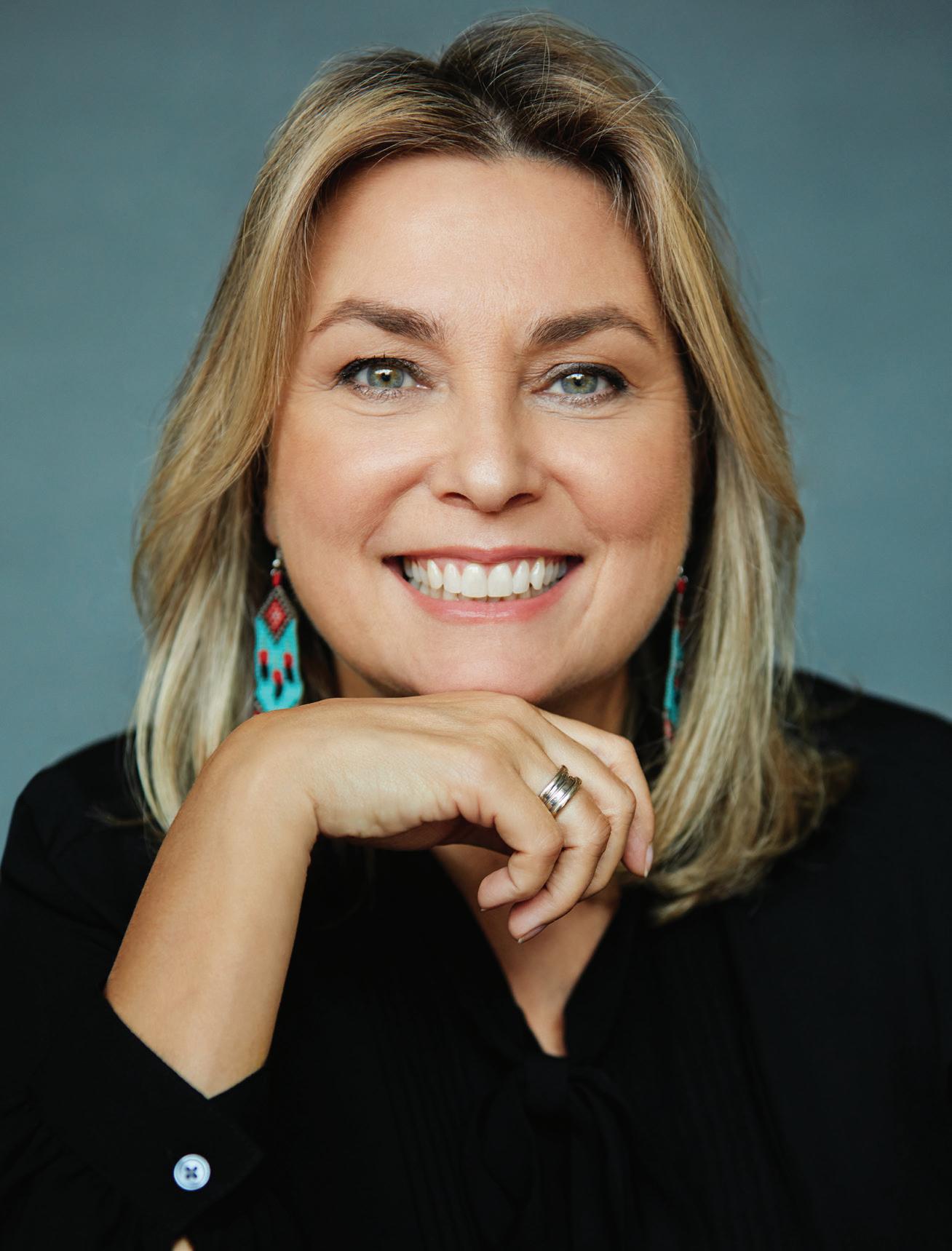
She worked her way up from Quebec liaison officer to executive director of programming and scheduling before succeeding former CEO Jean La Rose, who Ille says was “very supportive” in giving her opportunities for mentorship and growth at APTN.
Ille says her vision for the future of APTN is to focus on being adaptable in a fastevolving market, while upholding their responsibility to represent First Nations, Inuit and Métis peoples, including preserving their languages. Its attempts to modernize include the launch of OTT streamer APTN lumi in 2019 and bringing APTN News to TikTok in spring 2022. The SVOD has seen a 65% growth in subscribers over the last two years, according to APTN.
It’s a steep hill to climb in the face of declining cable subscriptions, which Ille says remains APTN’s top revenue source, and a difficult ad sale climate.
One of the solutions is within APTN’s broadcast licence, which is up for renewal in 2023. Ille says it is an opportunity to “rethink” their broadcast model and find ways for the network to thrive.
Her strategies include partnerships with larger broadcasters to tap into their resources. APTN has partnered with Bell Media and Blue Ant Media on Indigenousled productions such as Little Bird (OP Little Bird, Rezolution Pictures) and Savannah:
Ille says the initial spark for the MOU was lit several years ago after she met the pubcaster’s president and CEO Catherine Tait at On Screen Manitoba’s All Access industry forum in Winnipeg. APTN and CBC had previously worked together on projects including the docuseries Taken (Eagle Vision), and the two discussed how the networks could “help the Indigenous production community to do more.”
The two-year MOU covers entertainment, as well as news and information programming, and training programs. One of the first projects to come out of the MOU is an early-stage scripted development program for First Nations, Inuit and Métis television writers. Ille says it was important to set the terms of APTN’s relationship with CBC in writing to ensure a level of accountability.
“It’s really to give a wider reach to those stories,” she says. “I believe as people get to understand Indigenous perspectives, our culture, our history, our stories of struggles, but also our stories of success… that appreciation of who we are usually comes [next], and it’s at that moment where stereotypes and myths start to fall away. I believe in the power of storytelling.”
The APTN CEO wants to keep the network flexible as opportunities emerge for Indigenous-led storytelling.






AMBITIOUS FEATURE YET, it’s hard to believe the Toronto director once thought her filmmaking days were over.
Polley suffered a debilitating concussion in 2015 and doctors told her she would never be able to multitask at that level again.
Fast forward to today and Women Talking, which Polley wrote and directed based on Canadian author Miriam Toews’ 2018 novel, has, well, people talking. The film hit theatres in December and has critical acclaim, the backing of Toews and several honours, including first runner-up for TIFF People’s Choice.

Meanwhile, Polley’s new book Run Towards the Danger – which addresses how she dealt with her concussion – won the recent Toronto Book Award.
Women Talking is a harrowing story about women in a remote religious community grappling with trauma, abuse and the decision of how to take back power. It was filmed at a farm outside of Pickering, Ont., on an estimated $15 to $20 million budget. There, Polley and the crew built a colony and planted soy to bring the fictional Mennonite community of Molotschna to life.
“I loved doing something that felt ambitious and scary and out of my depth,” says Polley, whose previous three features as writer-director include the smaller-budget Stories We Tell (2012), Take This Waltz (2011) and Away From Her (2006), which earned her an Oscar nomination for Best Adapted Screenplay.
“It just made me braver to make a film like this, where I had to take a leap and a risk and not be assured that everything was going to work out.”
Polley also felt that way in reading Toews’ book. When she learned Dede Gardner of Plan B Entertainment (Brad Pitt’s prodco) and Academy Award winner Frances McDormand had optioned the rights, she reached out to her manager, who also represents McDormand. Unbeknownst to her, McDormand and Gardner had already asked him if Polley was free.

“I talked about it feeling epic and wanting to get outside the barn to feel the impact of nature and how seismic the stakes were in terms of this conversation and the kind of world these women are talking about wanting to create,” Polley recalls of that initial pitch.
Plan B then brought on Brooklyn, N.Y.-based HearSay Productions and MGM’s Orion Pictures, who “gave the film both the space to develop but also the scale on
which we wanted to make it.” They cast an ensemble of women including Claire Foy, Rooney Mara and Canadian Sheila McCarthy.
Polley was intent on “not missing anything” during filming, she says. “If something was happening in the corner of the room that didn’t seem central to the scene but it took on its own importance, I wanted the flexibility to follow that thread.”
One thing Polley believes benefitted Women Talking was skipping test screening, a practice she’s been told is now an “unavoidable part of the process.” While the filmmaker believes in soliciting honest feedback, she feels many of the film’s nuances would have been lost through a test audience.
“A lot of the complexities and things people are responding well to would have been taken out,” she says. “People like multiple meanings and different interpretations and something to talk about when they leave the theatre. I worry this template of always test screening can eliminate a lot of what’s rich and most interesting in our films.”
THE PAST YEAR FOR ANNMARIE MORAIS AND MARSHA GREENE HAS BEEN FILLED WITH NEW LESSONS AND OPPORTUNITIES, thanks to their experience as showrunners for CBC and BET+’s The Porter
“It’s allowed people to see me in a different way in terms of not just the person that you can hire to come in and fix broken characters, but also someone you need to hire when the questions are bigger than whether these characters are working or not,” says Morais, who also serves as an executive producer and writer alongside Greene on the series. “To be trusted and shepherd something from inception to the vision and then to the producers is a really new area for me.”
She adds “I’m grateful for what it’s brought, but I think we’re both women who’ve worked really hard to have this.”
The Porter follows two Black train porters who fight for equity in their workplace after enduring long hours and abusive treatment in the 1920s. Produced by Winnipeg-based Inferno Pictures and Toronto’s Sphere Media (formerly Sienna Films), the 8 x 60-minute series held a lot of firsts for both showrunners.
For Morais, it was her first official showrunner experience. She previously worked as a writer for series like CTV Sci-Fi’s Killjoys, BET’s American Soul, and Global’s Ransom
As for Greene, who’s the VP of the Writers Guild of Canada (WGC) and chair of the WGC Diversity Committee, she says she hadn’t previously worked on a series with so much VFX work nor “been through the process as a showrunner from the ground-up.” When she served as co-showrunner for Global’s Mary Kills People,


she was hired on in the third season. Greene has also written for Global’s Private Eyes and Departure, and ABC’s Ten Days in the Valley.
It was also the first time both worked in an all-Black writers’ room, comprising Andrew Burrows-Trotman, Priscilla White, Arnold Pinnock and Bruce Ramsay. R.T. Thorne also participated in the writers’ room.
Morais says the writers’ room brought diverse stories and experiences that were “crucial to building the fabric of The Porter.” Such representation seems to be increasing, she adds. “I don’t think The Porter will be a one-off in terms of having that experience again. It’s not common, but it’s becoming more acceptable.”

Jennifer Kawaja, executive producer of the series and president of scripted English content at Sphere Media, says “there’s a much greater appetite at the broadcasters’ [level] to recognize that up until a very short time ago, our industry was not inclusive and did not include people in positions of power like showrunners and creators who are racialized or BIPOC or who are LGBTQ+. There have been changes and I think an increased willingness and active work in that area.”
Since the success of The Porter, which got an Emmy nomination for best choreography for Christian Vincent, Greene has been working on a pilot and bible for a half-hour dramedy series about female friendship, using a grant received from the Canada Media Fund Early-Stage Development Program.
Morais says she has “several irons in the fire.” Among them is development on a TV adaptation of the Bluford YA novel series from Townsend Press, set in an inner-city high school, with a producing team including Mary J. Blige and David Dinerstein.
The Porter presented a lot of firsts for the duo, who say it won’t be a “one-off” in terms of representation.Marsha Greene, co-showrunner, writer and executive producer of CBC and BET+’s The Porter. Photo taken by May Truong Annmarie Morais, co-showrunner, writer and executive producer of CBC and BET+’s The Porter Photo taken by Amber Correa BY KELLY TOWNSEND
TORONTO’S MARBLEMEDIA HAS HAD A BANNER FEW YEARS, building a powerhouse lineup of niche competition series such as CBC’s Race Against the Tide, Discovery Canada’s A Cut Above, and, most recently, Netflix’s Drink Masters
Setting the foundation for that success has been their unexpected smash-hit glass-blowing competition series Blown Away
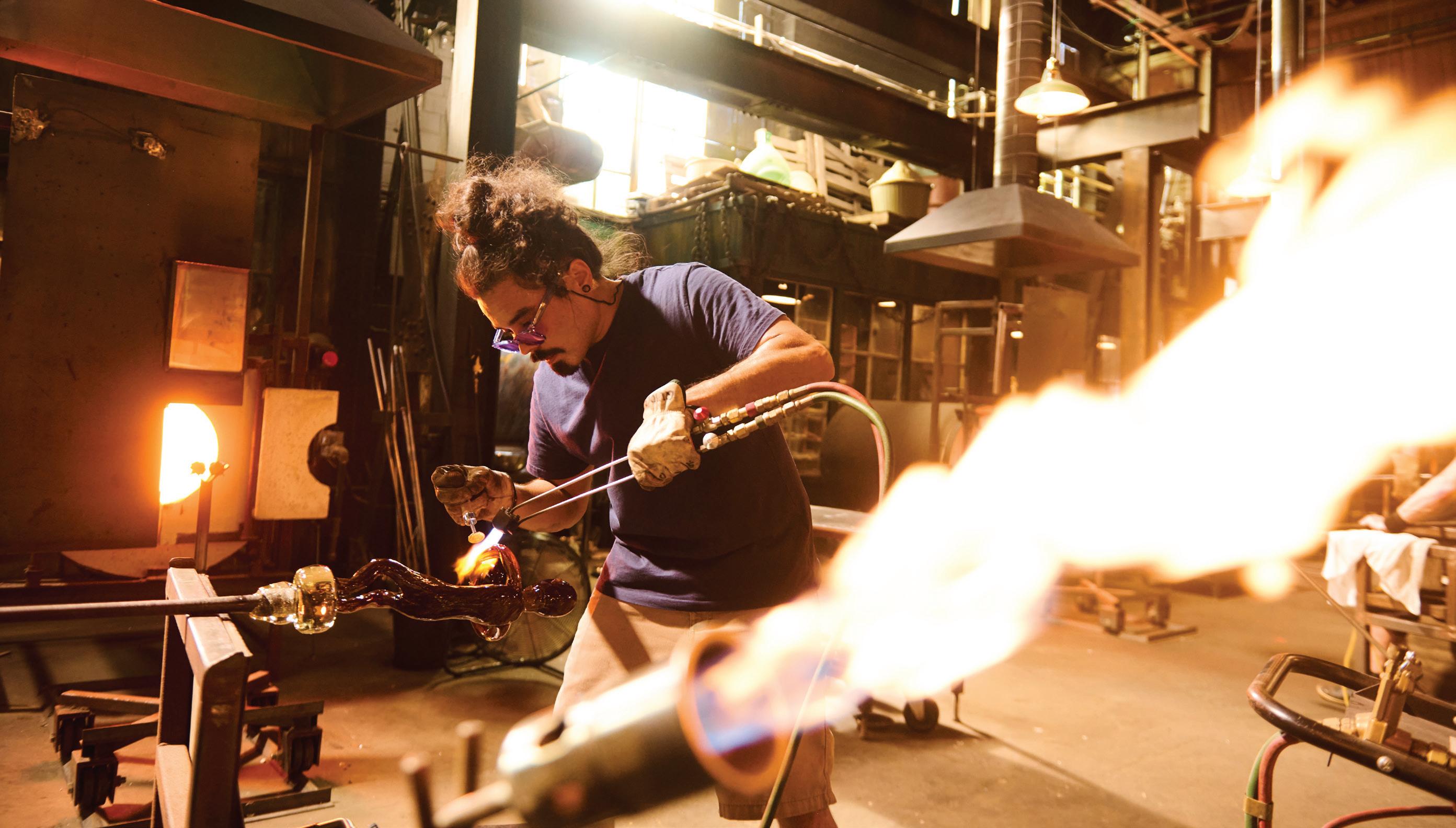
“I think we’ve always been exceptionally strong in the competition space and unscripted… but there was something about Blown Away specifically, because it was so in the zeitgeist,” says Matt Hornburg, co-CEO and executive producer at marblemedia. “It was the reference that all American buyers were making, you know, ‘what’s our version of Blown Away?’ And they weren’t saying that to us, they were saying that to our competitors.”
The series began as a co-commission between Blue Ant Media channel Makeful and Netflix, and became a global hit when it premiered on the streamer in July 2019.
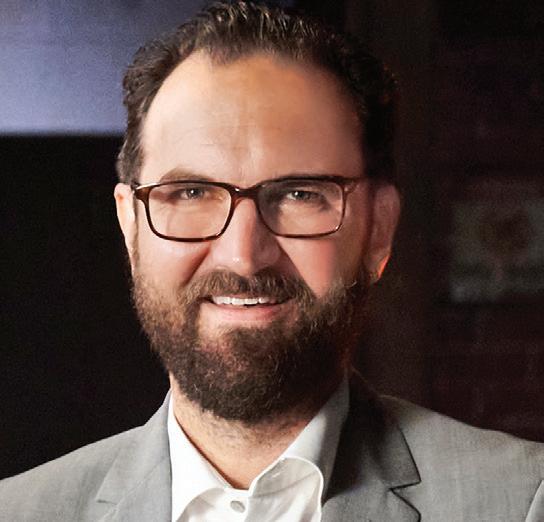
Three seasons and a Christmas special later, Blown Away continues to, well, blow us away. U.S. audiences alone watched 284 million minutes during season three’s debut week on Netflix, according to Nielsen, breaking into the top 10 original streaming series between July 18 to 24. Hornburg says data provided by Netflix shows a “high level of completion” from viewers. Netflix declined to share global streaming statistics, but season three hit the publicly-available top 10 lists in the U.S., the U.K., and Canada.
“I’m surprised we’ve gone as far as we have, to be honest,” says Hornburg. “What appeared at first as something so specific and so niche has really found a very broad audience around the world.”
The prodco is now able to tap into the global interest with second window linear sales through its subsidiary Distribution360, following the recent expiration of Netflix’s first window holdback.
Blown Away has already been sold to linear broadcast channels in the U.K., Ireland,
Flemish and French Belgium, the Netherlands, Luxembourg, Sweden, Malta, Sub-Saharan Africa, and French Canada. “It continues to be a bit of an experiment as this industry is in such a dynamic time,” says Hornburg.
While marblemedia has not received an official season four renewal as of press time, Hornburg says they’re currently in conversation with Netflix on how to reinvent the series to widen its audience and make it more accessible, while sticking to its niche roots.
Donna Luke, SVP, business operations, says series such as Blown Away show marblemedia’s strength as a production company that can “produce good reality competition that isn’t manufactured, that viewers really connect with,” adding that production value of their standing set in Hamilton, Ont., makes it an attractive investment for multiple seasons.
Hornburg points to Drink Masters as the next evolution in marblemedia’s unscripted strategy, which brought them into the culinary competition space. He says they’re actively developing and pitching formats to bring their “broad, accessible entertainment with an optimistic sort of lens” sensibilities to mainstream audiences on linear networks and streamers alike.

How marblemedia’s hit glass-blowing competition series ignited the prodco’s unscripted strategy.Above: Matt Hornburg co-CEO and executive producer Right: Donna Luke, SVP, business operations
A STRATEGY TO MERGE ESTABLISHED INDUSTRY SAVVY WITH A “BORDERBUSTING” CREATIVE SLATE HAS PAID OFF IN SPADES for Blink49 Studios in its first year of operations, accelerating its progress faster than even its founders anticipated.
closely with Toronto-based executive producer Virginia Rankin. The partnership allows for a “holistic” North American strategy, where they can appeal to buyers on both sides of the border, depending on what works best for a given project, says Newman.

“We saw an opportunity in Canada,” Blink49 Studios CEO John Morayniss tells Playback. “There’s a renaissance that’s happening right now, and it’s very talent-driven and story-driven, with a buying community that I think is feeling invigorated about the opportunities for original content in Canada.”
Morayniss describes Torontoheadquartered Blink49 Studios as an independently-owned global content company with a “lean-in to Canada” approach, equipped with a team of executives with expertise in both the Canadian and U.S. content markets.
He says the drive to build Blink49 was supported by the level of new buyers entering the system, and the global market interest in locally-made stories, leveraged by their expertise in producing and financing content. Morayniss served as CEO of Entertainment One (eOne) TV for a decade, and was formerly head of television at Alliance Atlantis.
The studio was launched in late 2021 by a group of former eOne execs, including COO Jeff Lynas, CFO Nelson Kuo-Lee and executive vice chair Patrice Theroux. Fifth Season (formerly Endeavor Content) is the company’s anchor investor and worldwide distributor. Morayniss says the two companies remain in daily communication on their content strategy and the state of the global market.
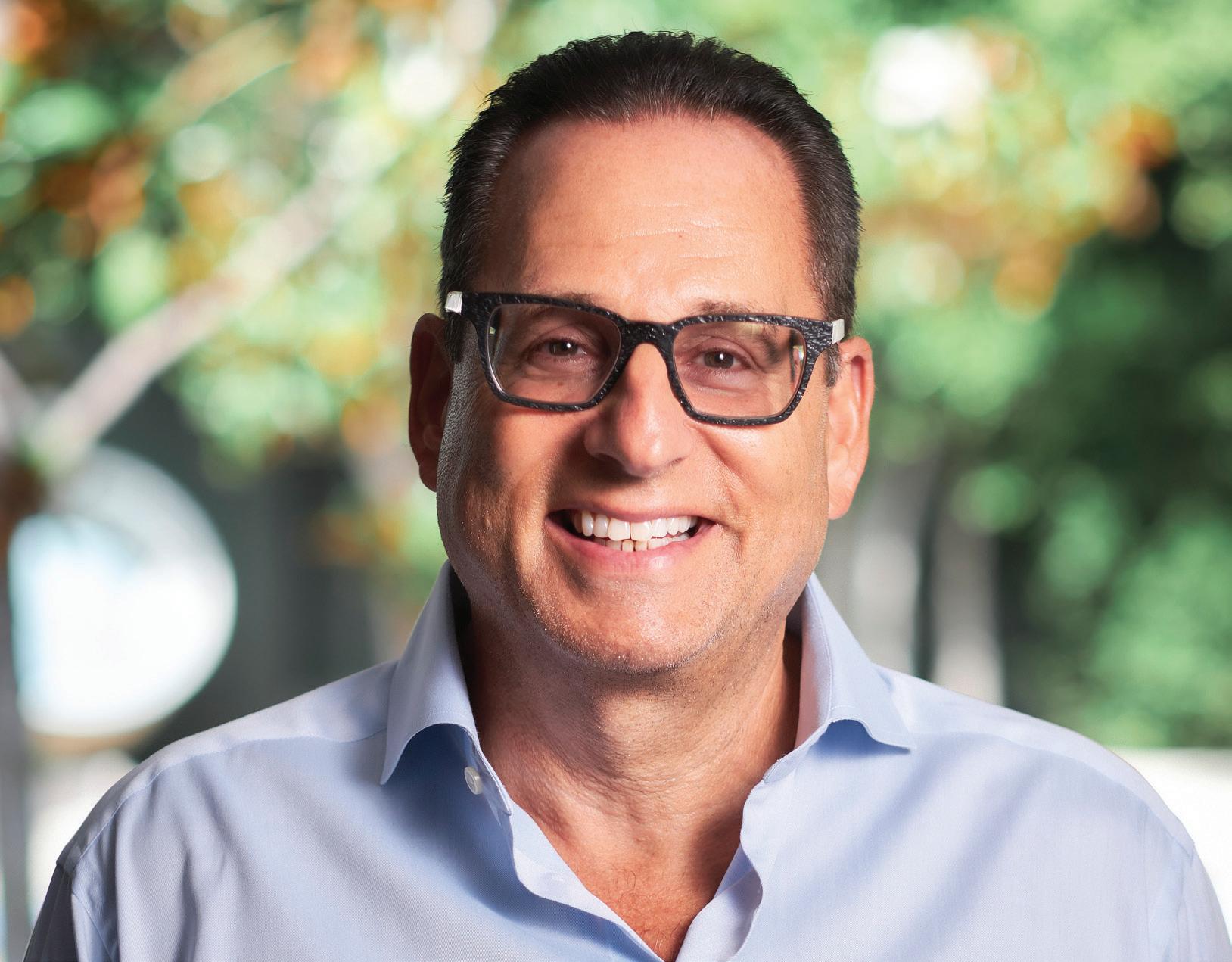
The content team is led by EVP, global scripted Carolyn Newman, formerly director of original series at Netflix, who works out of L.A. and collaborates
“We’re definitely somewhat surprised about the volume of activity we’ve had in the first year in both production and development, and the deals and relationships that we’re building, but it also confirms our thesis,” says Morayniss.
Partnerships formed over the last year include first look and overall deals with Canadian creatives such as Sheri Elwood (Moonshine) and Ben Sokolowski (The Walking Dead: The World Beyond); a content development and production deal with agency Vanguarde Artists Management; and a strategic investment in former USA Network president Jeff Wachtel’s new shingle Future Shack Entertainment, which includes distribution of its projects based in Canada.

One of the most notable deals signed in 2022 was with Canadian expat Lilly Singh and her L.A.-based prodco Unicorn Island Productions. The studio partnered with Bell Media for a first-look scripted deal with Singh, along with a second-look deal for unscripted content. The pact with Singh is reflective of their cross-border talent strategy, which focuses on bringing successful expats back to Canada as much as it amplifies homegrown talent within the North American market, according to Newman.
They brought the deal to Bell Media as a way to form a closer partnership with the broadcaster, according to Morayniss, either by bringing projects to them to develop and eventually commission, or pitch Bell Media as a Canadian partner on U.S. projects.
“There was an alignment between what we were trying to do with Unicorn Island and what we saw Bell pivoting into, getting a little closer to IP and a little closer to some really interesting Canadian talent, storytellers, and companies,” says Morayniss.
Such opportunities are part of what Newman describes as an ecosystem within the Blink49 Studios umbrella, where they’re consistently looking for collaborative opportunities between their various partners.
“It’s rare that you find one like-minded creative executive, let alone an entire studio,” says Elwood on her experience developing content with the studio. “John has put together a team that’s the perfect blend of market-savvy, out-of-box brilliance
The John Morayniss-led studio has attracted a range of artists and business partners in year one, solidifying its value proposition as a global content hub in Canada.Sheri Elwood, creator, Moonshine and Call Me Fitz
and writer-friendly resilience. I could not be more excited and proud of the eclectic, border-busting slate we’ve put together.”
The company already has two greenlights under its belt: Hallmark Channel original series Ride with Calgary-based coproducer SEVEN24 Films, and CTV crime drama Sight Unseen with Sisters Troubetzkoy Productions. Even so,


Morayniss says this is the “tip of the iceberg” of the growth expected to come.
Newman says she expects the heavy amount of development they’ve done in 2022 will lead to a busier production schedule in 2023 and 2024, which is an acceleration of their initial strategy of two years of strict development post-launch.
The momentum has helped Blink49 raise enough capital to act on its next frontier – buying majority or minority shares in smaller-scale production companies. Morayniss says they’re taking a very strategic and surgical approach to find companies that align with the Blink49 ecosystem.
“There’s a lot of really interesting Canadian production companies, both in the unscripted space and the scripted space, who are great storytellers and have something to say,” he says. “We think a partnership between Blink and these companies can supercharge them and provide them with some jet fuel that will take what they’ve done in Canada around the world.”
STUDIO’S INVESTMENT IN TALENT AND ORIGINAL IP PAID OFF IN 2022, which isn’t a surprise to CEO Frank Falcone, who says the company has “been steadily building our brands for years.”
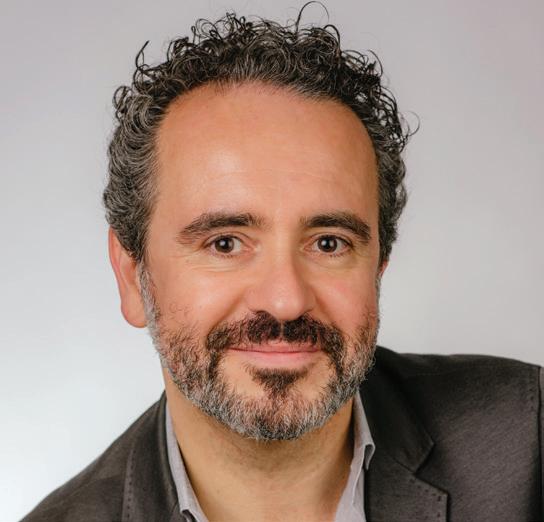
“This past year, we doubled down on brands and shows that have a steady audience, whether it’s boom times fuelled by the streamers or not,” says Falcone. “These shows outlive the platforms.”
The production company signed several new broadcast, product and licensing deals for its original IP, True and the Rainbow Kingdom, which first premiered on Netflix in 2017 and released subsequent seasons in 2018 and 2019.

The preschool animation is now tackling new realms for Guru. Titular character True is billed as the first 3D-animated character to join Cameo, thanks to a partnership with Texas tech company Aquifer to bring the protagonist to video messaging app Cameo using moderated AI. Guru receives 75% of the profits.
The studio has had an eye on innovation. In April 2022, Mark Pinder joined as VP of technology and has since led the development of its new virtual desktop infrastructure to ensure the studio’s more than 300 artists could continue to work from home. He’s also been leading efforts to upgrade the company’s CG pipeline, which will be his focus for the next year as well.
In 2022 alone, Guru signed new service deals with TIME Studios for Scoops, a new animated show focused on media literacy, and with Moonbug Entertainment for a new Disney+-bound CG series based on the YouTube hit My Magic Pet Morphle.
Meanwhile, Guru and Sesame Workshop premiered their Sesame Street animated spinoff Mecha Builders on

The studio has had to expand production work overseas to keep up with demand, partnering with several trusted studios for anything that Guru doesn’t have in-house capacity for. Despite this new growth and interest, Falcone is keeping the Toronto studio’s capacity at four to six shows at any one time.
“Instead of going into a growth mode where we added more projects and more people, we started to offshore some productions, as a strategy, to steel ourselves against oncoming [economic] headwinds,” says Falcone.
Guru also expanded its horizons in 2022 by partnering with Singapore company Omen Studios on a distribution and licensing deal for 123 Number Squad, an unusual partnership for the studio, which usually focuses on production or service partnerships and only distributes and does licensing work for its own IP.
“This is unique for us, but we liked the show and now we can see how it performs, then decide whether or not to get involved on the creative side in future seasons,” says Falcone.
The production company is working on an anime western for a VOD platform, a family sitcom focused on immigrant family values, and adapting a concept that is native to YouTube. All of the concepts are ones that Falcone believes hit on current trends in the marketplace, while offering something new.
Your dedication, commitment, and extraordinary contributions are an inspiration to us all.
From your friends at William F. White.

CITYTV PUNCHES FAR ABOVE ITS WEIGHT. That’s the consensus from some of Canada’s most prolific independent producers, even after five decades and counting.
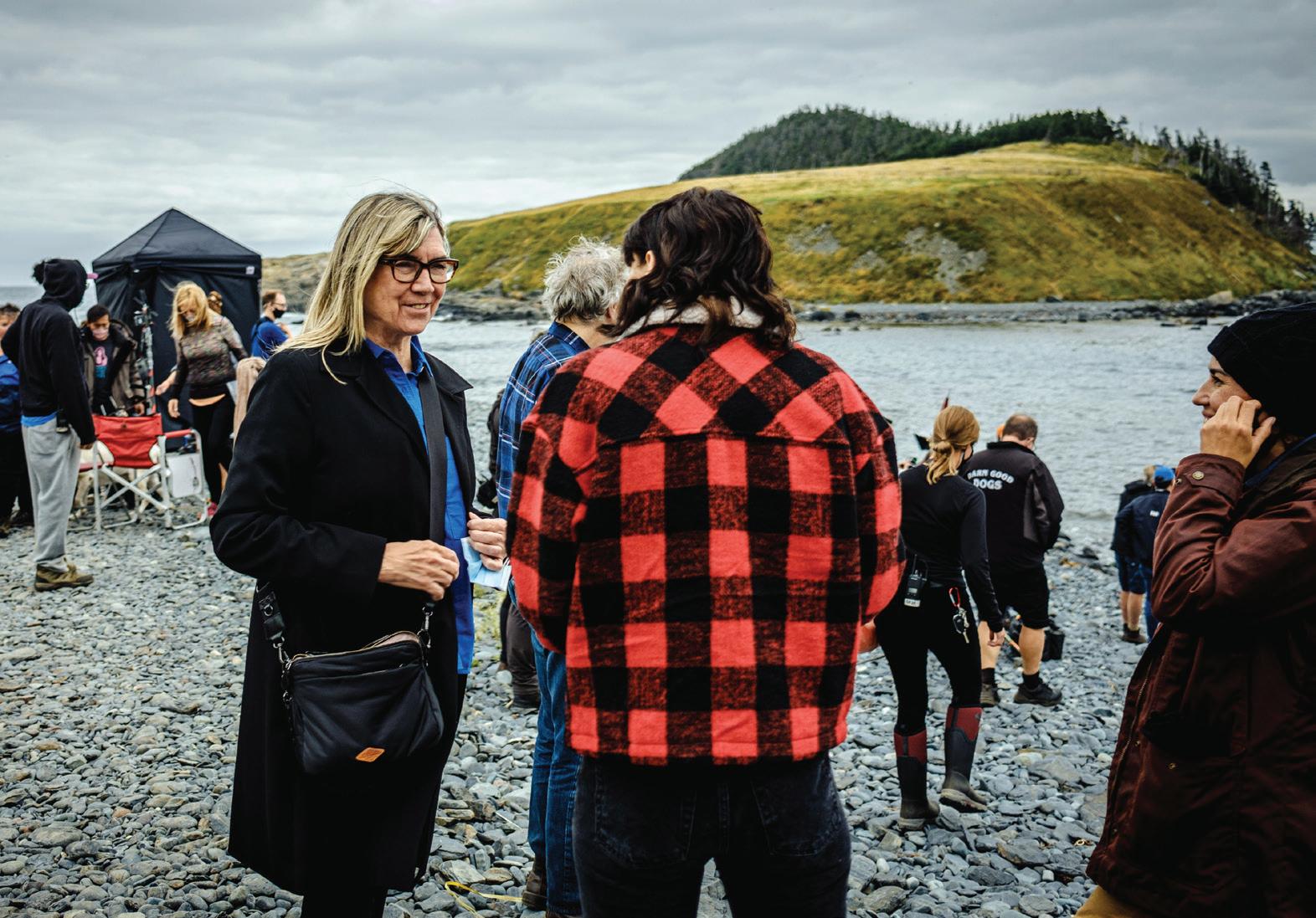

“They’re not a huge channel. They have to be clever because they don’t have all the money in the world. … There are no huge teams of people,” says Christina Jennings, chairman and president of Shaftesbury, which saw its series Murdoch Mysteries run on Citytv for five seasons until it moved to CBC in 2013, and now has Hudson & Rex into its fifth season on the channel.
“Everything is pretty streamlined, pretty efficient. I’ve always admired them, right back from the Murdoch days [16 years ago]; there was this out-ofthe-box thinking.”
Citytv hit the 50th anniversary of its very first broadcast on Sept. 28, 2022. Media executive Moses Znaimer launched the flagship channel in 1972 as Toronto’s first independent television station and made waves with its unconventional offerings –from maverick, in-depth local news, to the weekly FashionTelevision hosted by Jeanne Beker, to the streetlevel musings series Speakers Corner
“From its earliest days, the newsroom at Citytv broke the mold,” says Dave Budge, VP of news and information at Rogers Sports & Media. “They pioneered the open newsroom set, created new approaches to shooting and storytelling, and broke ground on diversity. It’s been an honour to expand on those innovations with the no-anchor format, emphasis on mobile and video journalism, weaving Speakers Corner into our journalism, and a commitment to anti-racism.“
Znaimer, who is now founder and CEO of ZoomerMedia, agrees that innovation was key to its success. The format of Speakers Corner worked so well, he’s doing it again today as VoxBox in Toronto’s trendy Liberty Village.
 BY SUZAN AYSCOUGH
BY SUZAN AYSCOUGH
“Among the many innovative things that people remember most about my original Citytv is Speakers Corner, and despite all the recent developments in interactive digital tech and the many ways in which you can now do it yourself on mobile, there’s still something thrilling about speaking your mind for all to see at a place and in a booth designed for the purpose,” Znaimer tells Playback
Znaimer also remembers Citytv’s first broadcast like it was yesterday: “Perhaps my sharpest, most poignant memory of Citytv is of the moment it went to air to zero audience. It was 7:30 p.m., Sept. 28, 1972, a day that marked the largest television audience recorded in Canadian history up to that time. Alas, all those
viewers weren’t tuned into my upstart Channel 79 but, instead, were watching Team Canada’s historic seventh game victory over the Soviets, topped by Paul Henderson’s epic goal.”
In 1982, City was bought by CHUM Limited, which was acquired by CTVglobemedia (now Bell Media) in 2007. The Citytv stations were then sold to Rogers Communications and are now a part of subsidiary Rogers Sports & Media, with seven stations in Toronto, Vancouver, Calgary, Edmonton, Saskatchewan, Winnipeg, and Montreal, along with the Citytv app.
“When we sought to acquire Citytv 15 years ago in 2007, it was part of a larger plan to be a player in Canada’s broadcast industry,” explains Colette Watson, president of Rogers Sports & Media. “We try to keep the original Citytv DNA in our thought process. It’s spunky and local.”
Jennings recalls Shaftesbury doing three Murdoch Mysteries movies for Citytv before the detective series was greenlit and went on to air in over 150 countries and territories. “At the time, if you looked around the world, nobody was doing period-piece police procedurals. So again, that’s Citytv thinking: ‘We don’t have all the money in the world. We’ve got to pick our things. How are we going to get noticed in a supercrowded marketplace?’”
Mark Montefiore, president of New Metric Media (Children Ruin Everything; Letterkenny), says Citytv provided the original bulk of the financing for his Canadian-turned-international hit gritty crime drama Bad Blood, which aired for two seasons from 2017-18 and also landed on Netflix.
Colette Watson, president of Rogers Sports & Media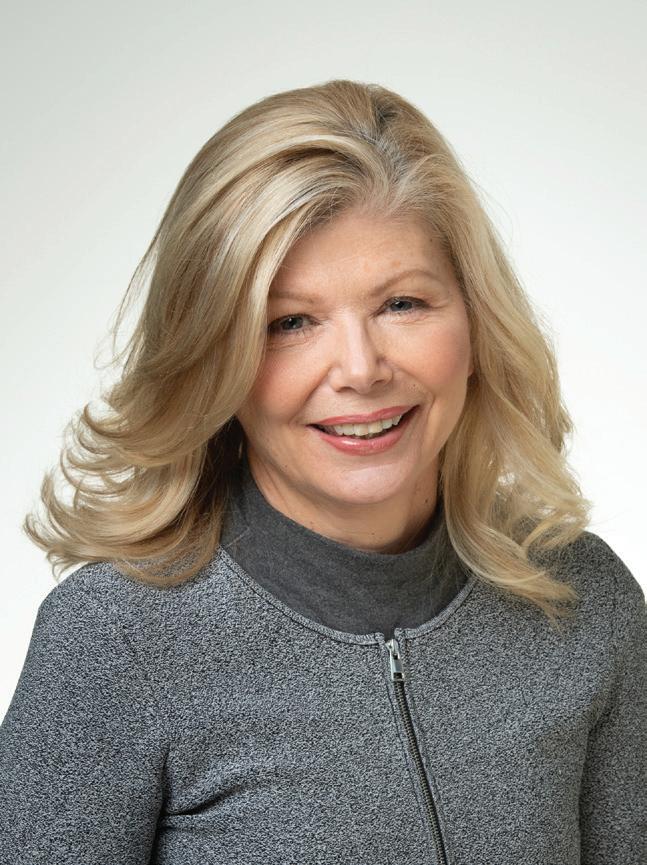
“Bad Blood was so different than anything we made before,” he says, “and Rogers gave us the opportunity to be able to take a big swing. Bad Blood is a big, ambitious, glamorous project with lots of guns and explosions. It’s not a cheap production to do, even for broadcasters with the deepest pockets in Canada. Rogers wasn’t scared by that.”
Watson says of her strategy for the company: “Humans – from the beginning of time ‘til the end of time – will always want to be informed and entertained. That will never change. So give them programming they want, how they want it, and you’ll be fine.”
To that end, Citytv was “early to the streaming world when we launched Citytv NOW streaming in 2018,” she adds. While Citytv’s biggest audience is still conventional television (linear), the fastestgrowing viewership is streaming (non-linear), so Citytv caters to both. As such, last April Citytv also launched new video streaming products: Citytv+ and CityNews 24/7 on Amazon’s Prime Video, which boosted audiences, according to Citytv.
The company declined to share viewership or subscriber details for Citytv+ and CityNews 24/7 but touts them as “innovative, new
digital streaming video products” aligned with its goals for “streaming partnerships to increase distribution” of its content.
When it comes to Citytv’s audience, “2022 was the best yet,” says Watson, citing year-over-year growth in audience from fall ’21 vs. fall ‘22, with an increase of 7% in primetime share.
Recent Canadian success stories on the channel include Hudson & Rex, a feel-good cop show about a man and his trusted dog, which airs in 120 countries. Season five has attracted average audiences of 684.9 thousand (demographic of 2+), according to Numeris.
Then there’s the revival of Canada’s Got Talent (CGT), produced by Fremantle, SYCO Entertainment and McGillivray Entertainment Media, in association with Citytv. During the season that launched last March, the reality competition series reached 4.6 million Canadians on linear and more than 410,000 unique viewers across Citytv.com, the Citytv app, and Citytv+ on Prime Video, according to Numeris.
Janice Smith, VP of national media sales at Rogers Sports & Media, says by the end of season one, “CGT owned not only the top spot in primetime, but our audience has progressed incredibly well, with great consistency throughout the show.” She adds that the series was a great vehicle for brand integrations for advertisers including Tim Hortons and CIBC.
“For us, brand integration is about creating some really great original content … that’s specific to Citytv and specific to Canadian audiences,” Smith continues. She points to examples CGT, Hudson & Rex, and Bachelor in Paradise Canada as “very big, original productions with proven … incredible opportunities for our clients to embed their products, and their messaging right into shows.”
Tim Hortons is also integrated into popular morning show Breakfast Television, which has been around since 1989, and daytime talk series Cityline, which began as a format in 1983.
Talk of Cityline and news broadcasting harkens back to Citytv’s roots and the “bleeding-edge” journalism for which was Citytv famous as “CityTV” or “City.” (The current rebrand of Citytv – with a small ’tv’ –was decided in 2018.)
Watson says their current news programming is akin to the videographer days of the old CityPulse, only now instead of using bulky cameras, reporters go “out with a phone and bring your story in, so that way we can cover more [stories]. We don’t have the budgets that Global and CTV have, but we certainly have the will and desire, and local news is important to us, and will continue to be important to us.”
“When we sought to acquire Citytv 15 years ago in 2007, it was part of a larger plan to be a player in Canada’s broadcast industry. We try to keep the original Citytv DNA in our thought process. It’s spunky and local.”
THE STREAMING SERVICE BOOM IS KEEPING GRACE GILROY AS BUSY AS EVER. And that’s fine by the Vancouver-based producer, who continues to find the work exciting after four decades amassing various producer credits on TV series and features including The X-Files and Blues Brothers 2000 and serving as production manager on more than 45 projects.
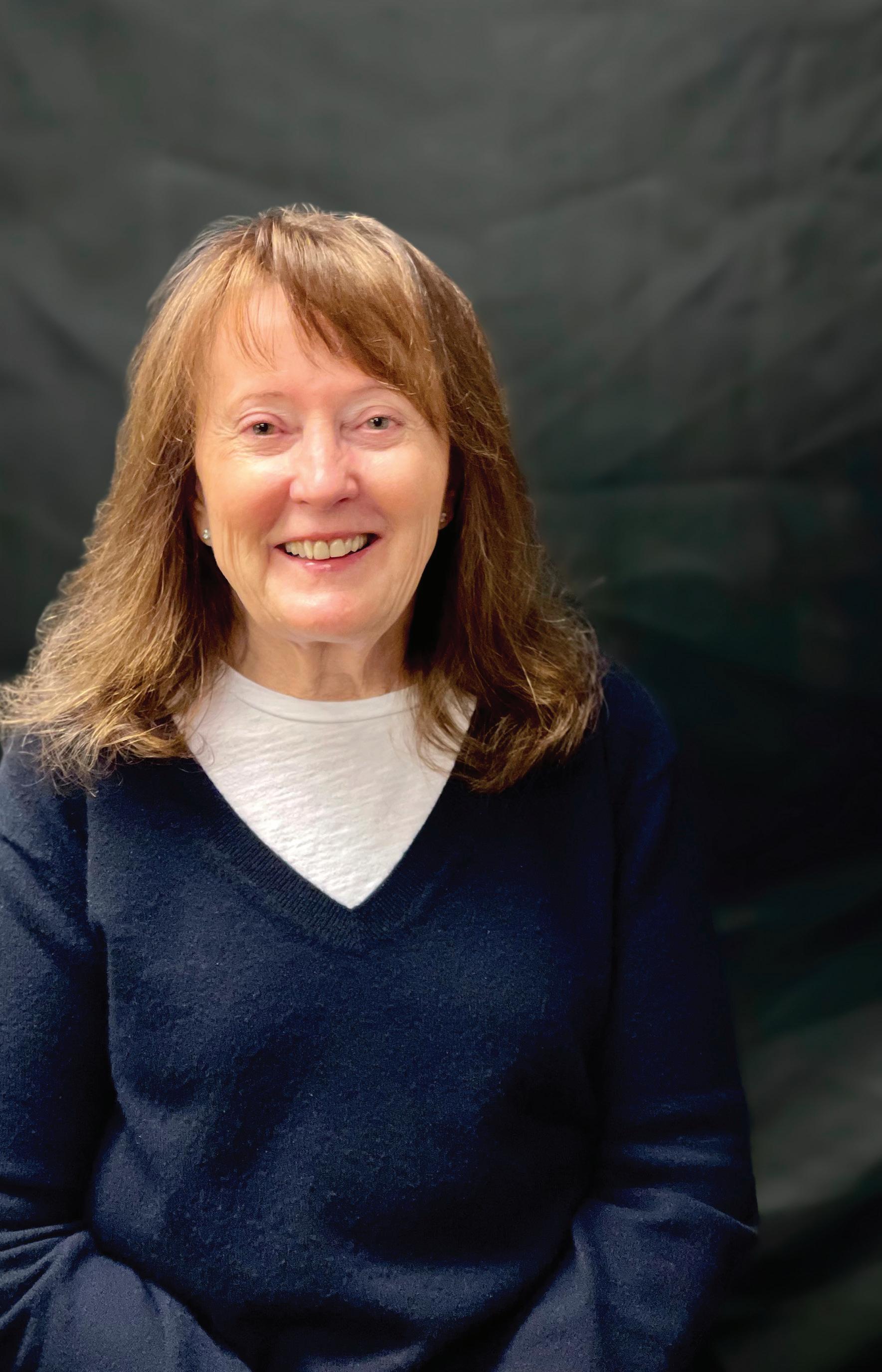
Gilroy is currently executive producing kids series The Spiderwick Chronicles, the latest screen adaptation of the novels about a fairy world by Tony DiTerlizzi and Holly Black. The Disney+ eight-parter is expected to shoot through January.
“There are a lot of puppets and makeup effects and that kind of special work, which I like to do,” Gilroy says. “Anything that’s a little challenging, I’m interested in.”
Another special project she recently coproduced is VFX-heavy fantasy series The Mysterious Benedict Society for Disney+. Gilroy attended the Children’s & Family Emmy Awards in December in Los Angeles, where the show had a leading 11 nominations and won for costume design and directing. “That was a huge tribute to all the directors,” she says.
And then there’s Grease: Rise of the Pink Ladies, a 10-episode pre-rock and roll musical series she exec produced for Paramount+. It is set at Rydell High four years before events in the John Travolta/Olivia NewtonJohn blockbuster feature, following four rebellious females who form a clique. It is expected to drop in the spring.
“We had a lot of fun,” Gilroy recalls. “I love musicals and I’ve done a few of them. We don’t generally do musicals
Hollywood trusts the producer to efficiently bring scripts to screen.
in Vancouver – they’re generally done on the East Coast because that’s where the talent is. But we pulled it off.”
The series was originally to be shot in California, but the bottom line was more attractive in Vancouver, so north it came. Having Gilroy in B.C. helps the studios feel comfortable shooting there.
An earlier example is sci-fi classic The X-Files, which began shooting in Vancouver in 1993 but after five seasons shifted to Los Angeles for the next four, a decision reportedly driven by the show’s stars. But when Fox revived the show in 2016, it was back to B.C., and Gilroy was hired to produce.
“I hired her after years of hearing her spoken of in the most reverential terms,” Chris Carter, creator of The X-Files, tells Playback
“A Grace Gilroy production is a thing of beauty: no wasted energy, no wasted resources, no wasted time. She’s great at putting together a team, and it’s telling that people are so loyal to her. She knows script and how and when to step in on the creative side, but all the drama happens in front of the camera. She has a very low level of tolerance for the usual nonsense, but she’s really fun to work with. She is simply the consummate producer.”
Gilroy is often credited as executive producer, a title that can encompass varying levels of involvement. But make no mistake, she is hands-on.

“I come from production, and my counterpart is often from the creative side, so we have to work together,” she explains. “I’m the nuts and bolts person. I help the creative producer get where they want. That’s my main job. I’m not the kind of person who will say, ‘Well, we can’t afford to do that.’ I’m all about ‘This is what we have to do.’”
Another notable partner has been Steven Spielberg, who spearheaded the TNT/Super Channel series Falling Skies, about civilians warding off an alien invasion. The acclaimed program shot its first season in Toronto before moving to Vancouver in 2011, at which point Gilroy was hired on.
One might expect a Spielberg production to have limitless resources, but that was not the case, and it would be highly challenging to realize his vision for the show –a point Gilroy impressed upon executive producer and director Greg Beeman.
“When they sent me the budget, I said ‘Beeman, I’m driving over the Ironworkers Memorial Bridge and there’s a small stage under here. Have you ever heard of Ajatan Film Studios? Because that’s all we can afford,’” she recalls with a laugh. “And we turned that space into every city and everything else we needed for the next four years.”
Gilroy’s journey in the biz began in her hometown of Edmonton. She had long been interested in the performing arts and volunteered at local educational broadcaster Access, which led to work with independent producers. She was a partner in Kicking Horse Productions, which started off making docs.
“I scripted, I location-managed, I unit-managed. I basically tried everything and then eventually started doing a fair amount of dramatic work,” she recalls.
She had an early gig doing location work for SCTV when the show moved to Edmonton for its third season
in 1980. She brushed with another level of fame as production manager on the Western comedy Draw! (1984) starring Kirk Douglas and James Coburn. It proved an invaluable experience.
Douglas, she says, “passed on so much information. Those senior actors like him and Anthony Hopkins, whom I had the pleasure of working with on The Edge (1997), are an open book. On Westerns you’re dealing with the environment and animals. It puts everybody on the same level. They put their ego on the shelf and they’ll do anything to explain things to you.”
Gilroy’s career took off in the ‘80s with the many miniseries that came to Canada, such as Kane & Abel and Evergreen, both of which shot in Toronto. She impressed studio execs and later donned the hat of associate producer on the feature Blues Brothers 2000 (1998) and producer on Bride of Chucky (1998).
“Grace is a powerful force,” says producer Leslie Belzberg, whom Gilroy worked under on Blues Brothers 2000. “She is not only a great collaborator but also a wonderful friend and ally. We have worked together a number of times and in each case our collaborations were seamless. I have often reached out to her for advice and information on Canadian production.”
Gilroy has long believed in giving back. She was a founding member of the DGC Alberta District Council and served as its chair, and is currently secretary-treasurer of the DGC and the DGC Health & Welfare Plan, and vicechair of the Canadian Entertainment Industry Retirement Plan. She was recognized with the DGC Distinguished Service Award in 2002.
“I have been lucky enough to work with both studios and great people on the labour side,” she says. “And I attribute my interest in the Directors Guild of Canada to that. It has given me an opportunity to do better by people, and I think that’s important.”
Playback’s Canadian Film and Television Hall of Fame was founded in 2007 to recognize extraordinary achievements in the Canadian entertainment industry. Inductees are selected by a jury of their peers.

The pandemic changed so much for producers. Some of its impact – such as cost increases – have been a bit like ‘long Covid’: rather unwelcome. But there have been positives too, such as the normalization of Zoom pitch meetings.
Video pitches save us time and money by not travelling to L.A. each month and give us windows into our buyers’ home lives, which can deepen our relationships. But they are not without their pitfalls, and I have had some interesting learnings. Here are my tips for landing perfect pitches online.
DO focus. Stare straight into the camera and hold the eyeline of your audience – even if it feels odd trying to engage with the Brady Bunch layout of execs in boxes. However, DON’T be so focused that you miss what’s going on behind YOU. In one pitch, a U.S. network exec was unaware his naked toddler was running around!
DO have a member of your team on hand to watch everyone – and take notes. When a showrunner is in full flow, it’s not always easy to see if the person in the top left-hand corner wants to ask a question. Colleagues passing virtual notes can help in that situation. So, DO always have a messaging window open.
DO invest in a proper microphone. After variously sounding like a Dalek or having commissioners only hear every third word, I bought a standalone mic. It might look like I’m hosting a podcast but, if the picture fails, I can still deliver my pitch with clear audio.
DO ‘dress your room.’ You don’t need to call in Bryan Baeumler but do think about changing up your background. Maybe include family photos when pitching family shows or a Canadian Screen Award to get the conversation started? Use your background for subliminal messaging; just make sure the received message isn’t that you need to throw out that half-eaten sandwich!
DON’T send your pitch deck in advance as you want buyers to listen, not read. Decks work better as a follow-up as you can update them with key learnings from the meeting before you send. It can be hard for showrunners to deliver the comedy in a pitch when everyone on the other side is on mute. So, bring the energy and DO laugh loudly at your colleagues’ jokes. But DON’T forget to turn on your mic, otherwise you’ll just look a little crazy!
Finally, DO remember the pets! We’ve all met cute cats and dogs on Zoom. Even senior network execs are Blown Away if you remember their pet’s name and follow them on Instagram!

Our stories have the power to inform, influence, and change minds - but who decides which stories are told? With very few of Canada’s leading independent media companies of scale primarily owned and operated by women, the overarching goal of the BANFF Spark Accelerator for Women in the Business of Media is to put more Canadian women in charge.

With an intersectional mandate designed to empower women of colour, Indigenous women, women with disabilities, LGBTQ2S+ women, and non-binary individuals, the program has already given 200 women entrepreneurs opportunities and resources to help them level up their business domestically and across the global screen industry.

Add some “Spark” to your business this year! Find, meet, and forge new opportunities – from content production and talent representation, to tech and innovation, to distribution and marketing, and everywhere in between – with Canada’s most prominent women-owned media companies.

Meet the talented BANFF Spark participants here: SUPPORTED

Mark your calendars for the 44th edition of one of the screen industry’s most prestigious events. Get your all-access pass for BANFF’s international conference, marketplace and Rockie Awards, alongside the world’s top creators, producers, showrunners, talent, networks, studios, streamers, press and media companies.

banffmediafestival.com
